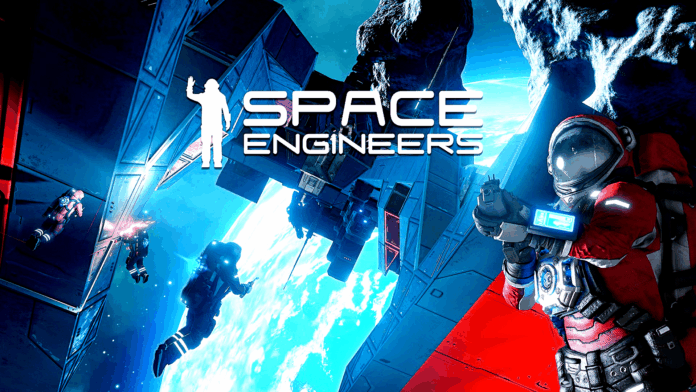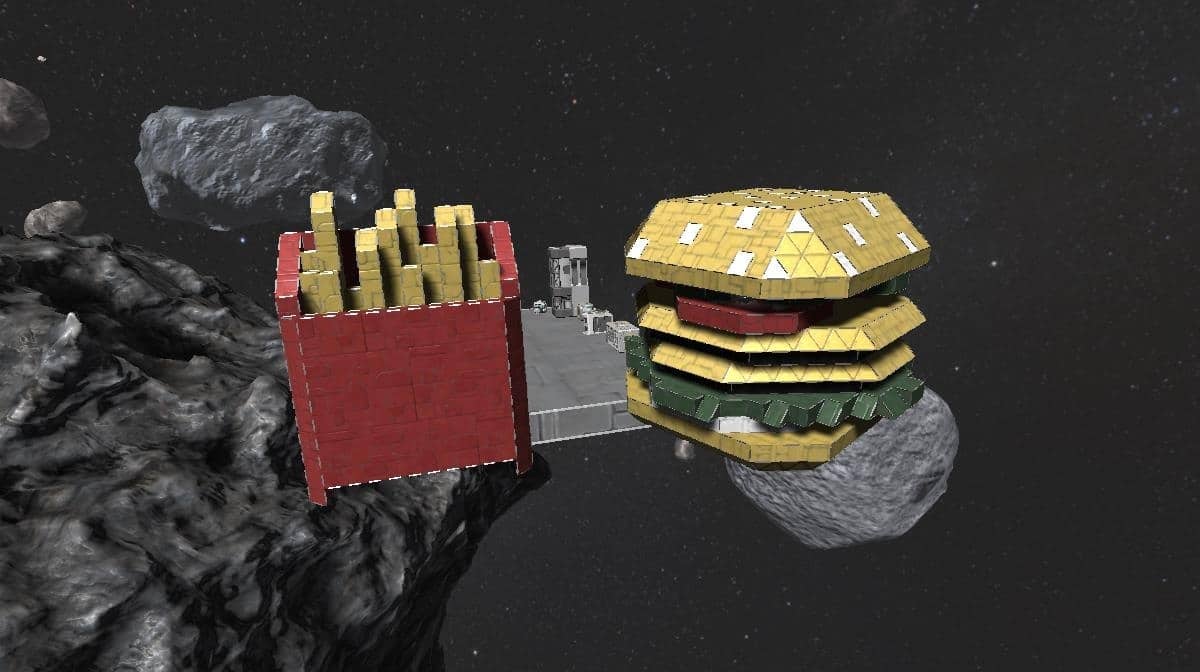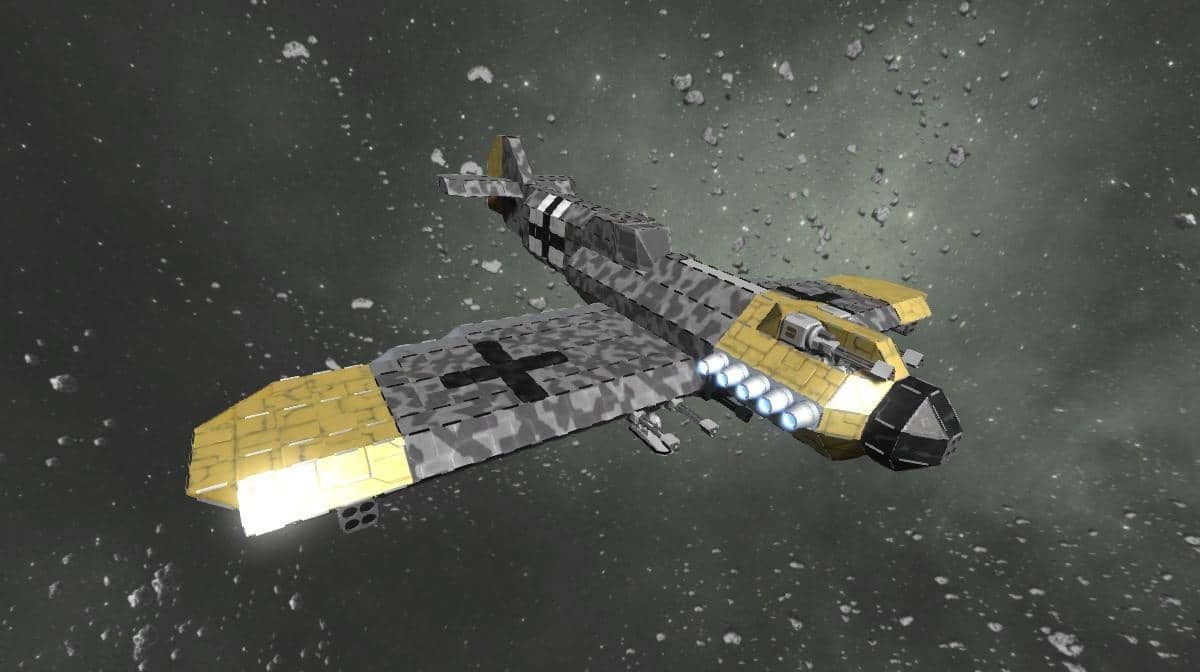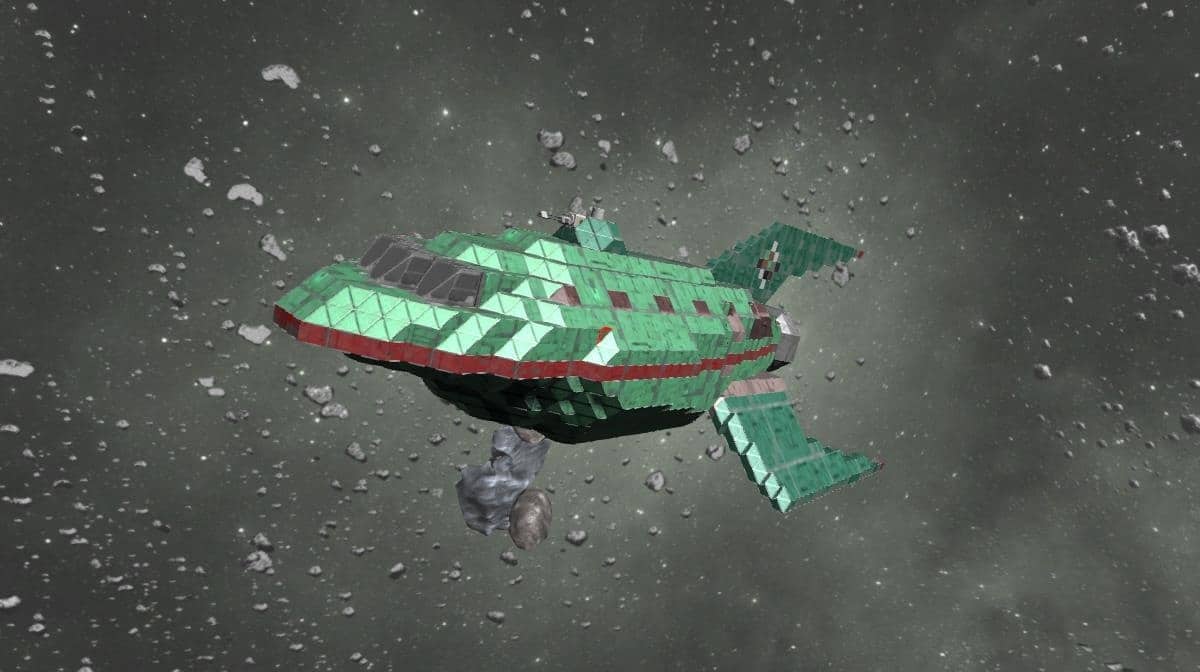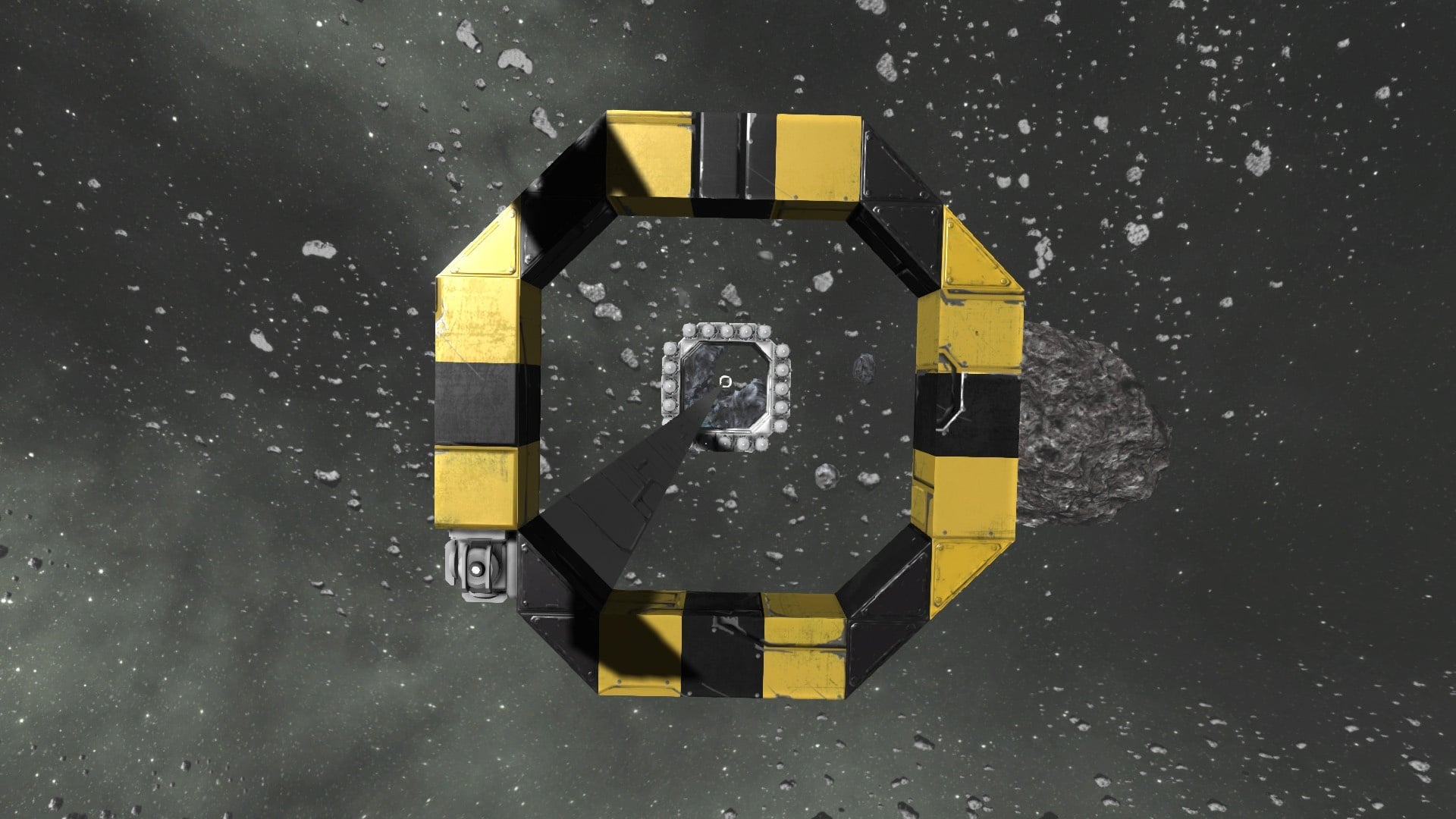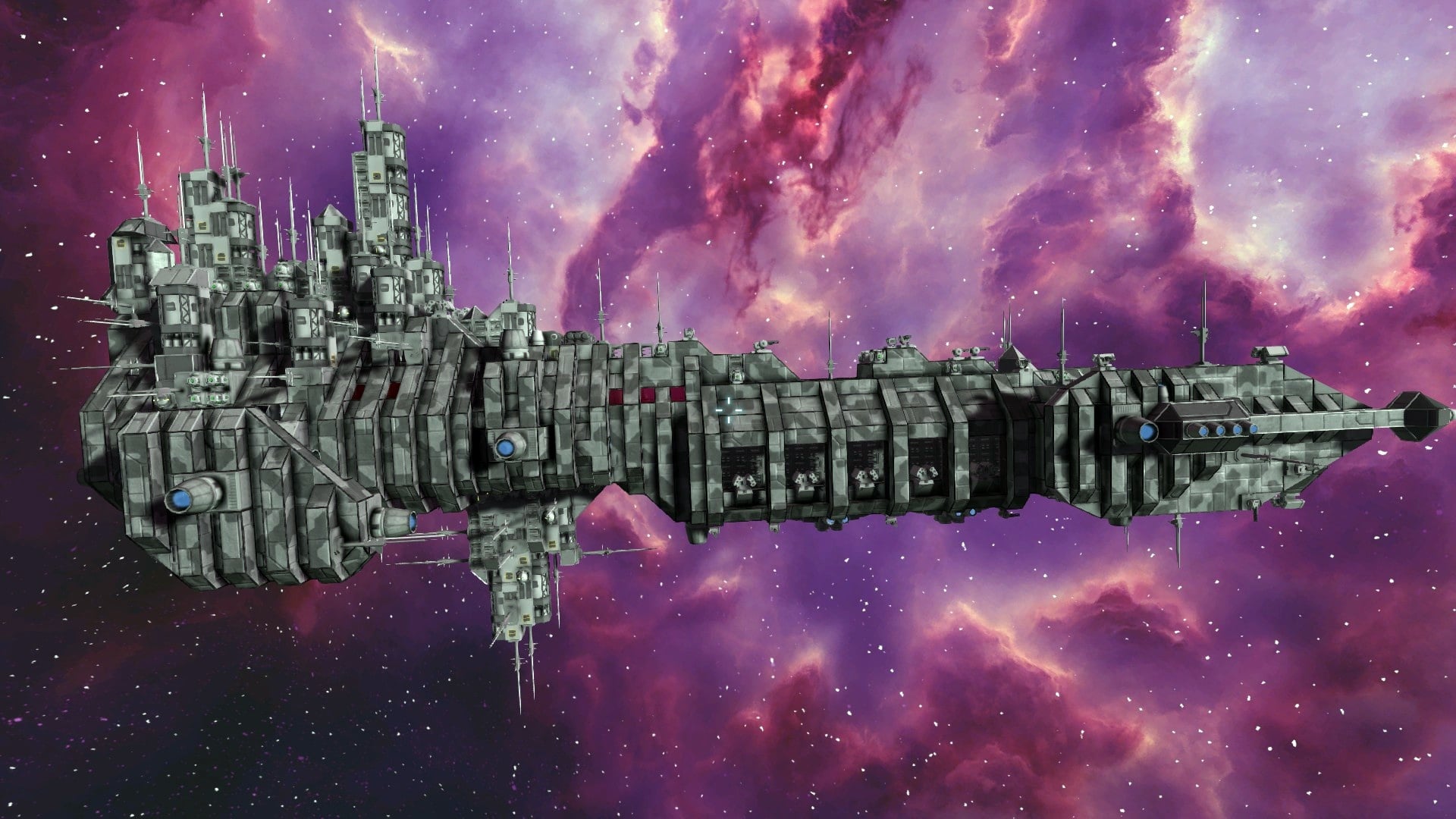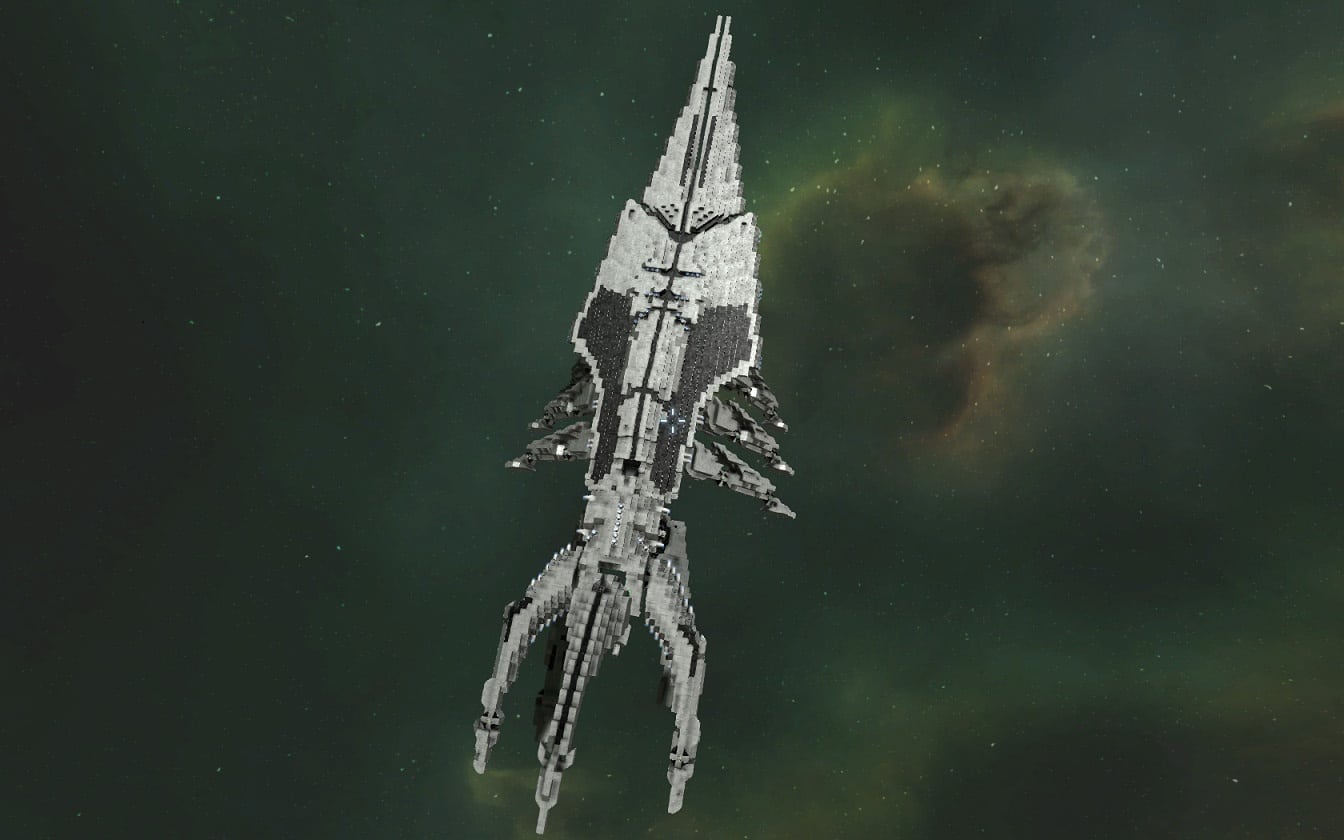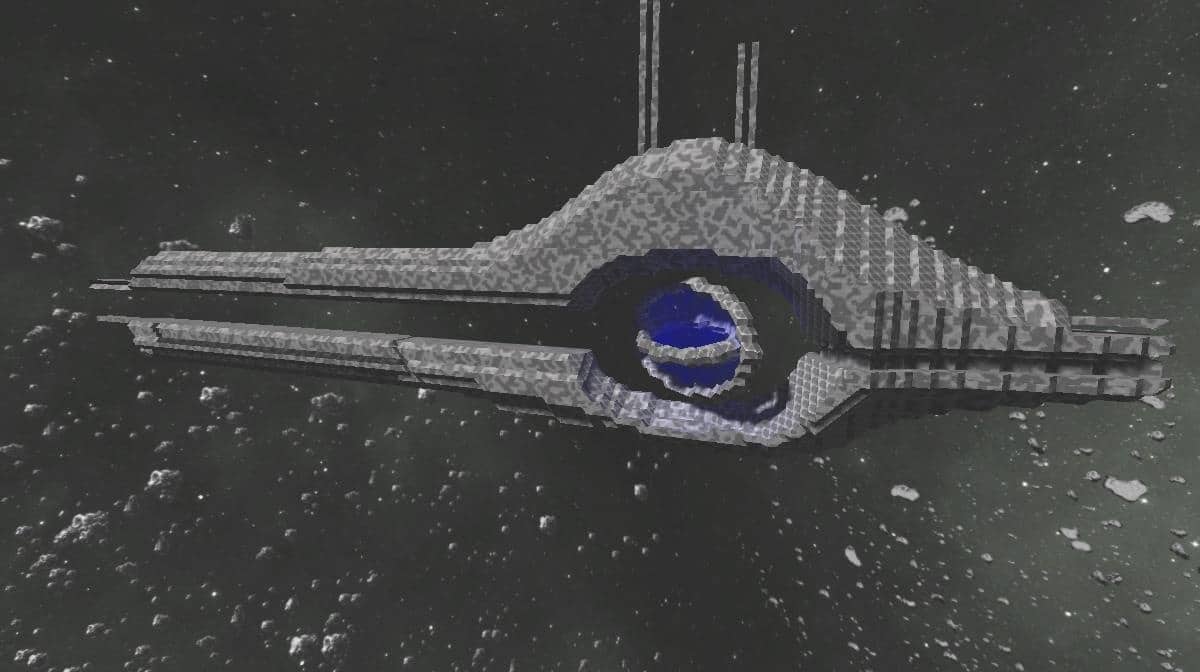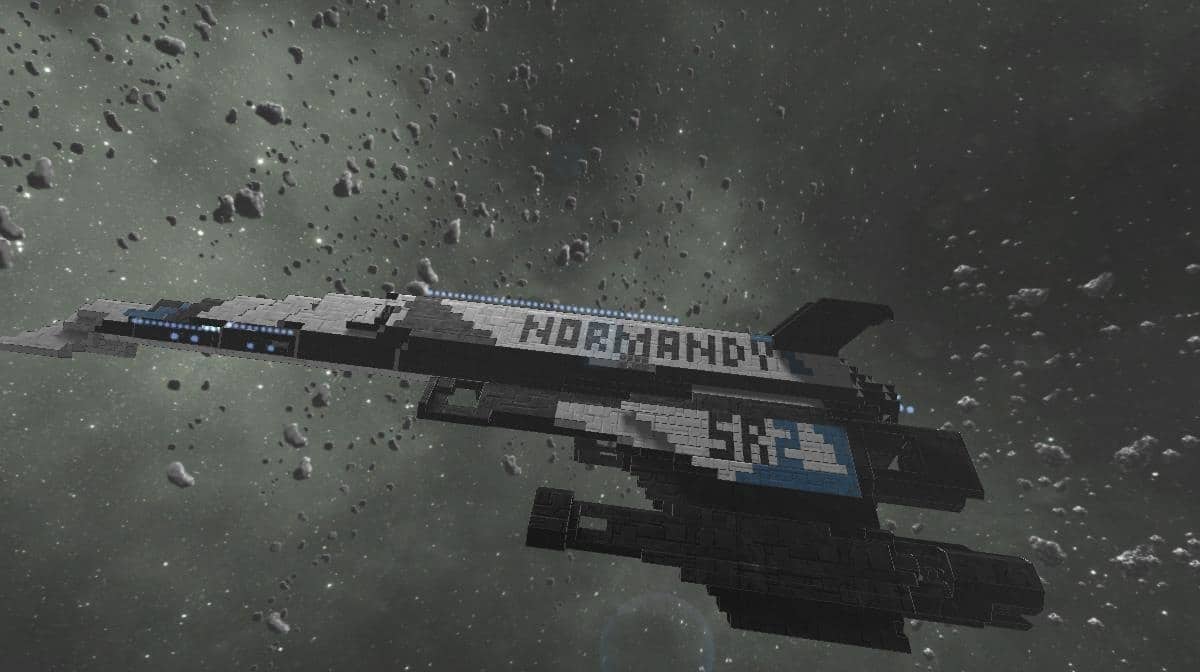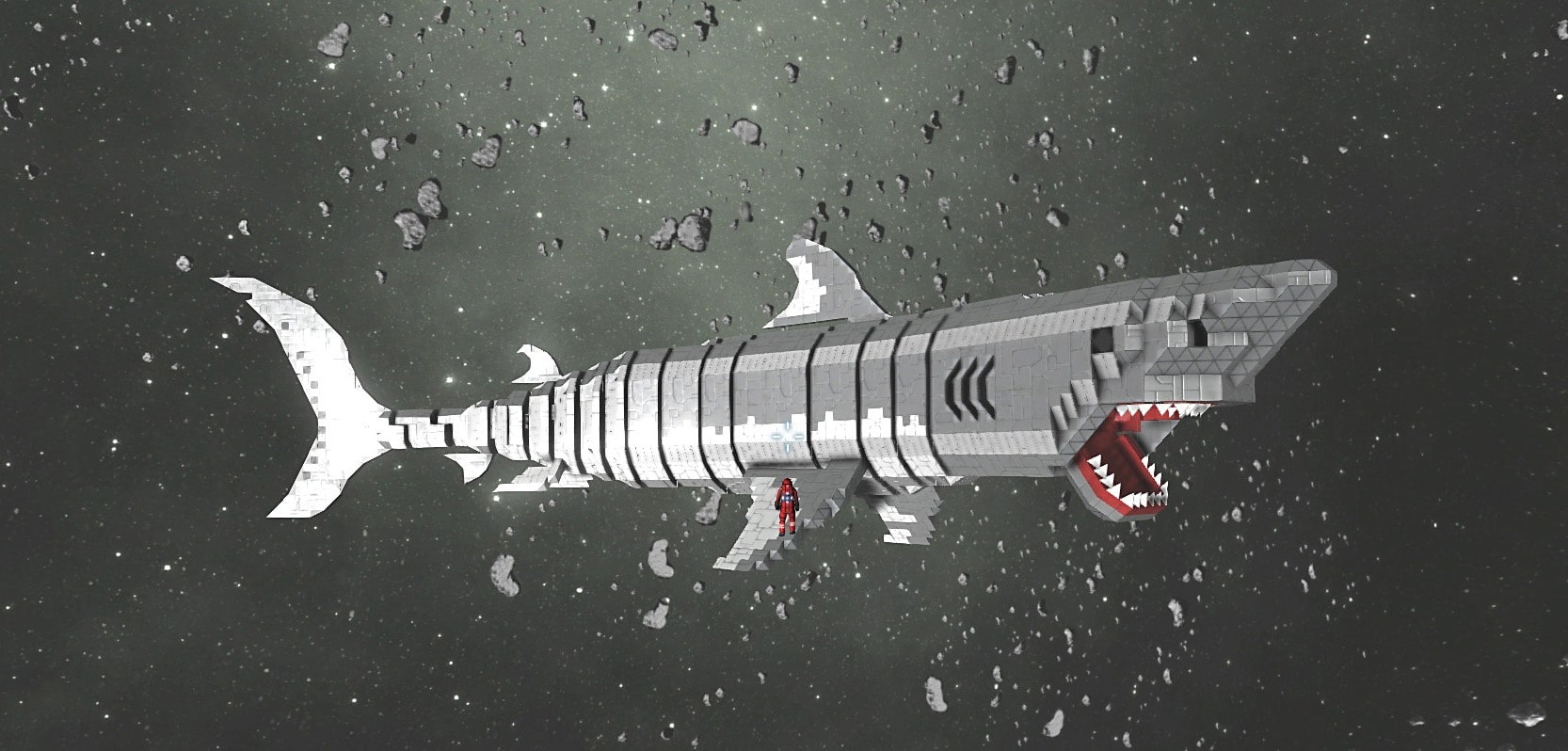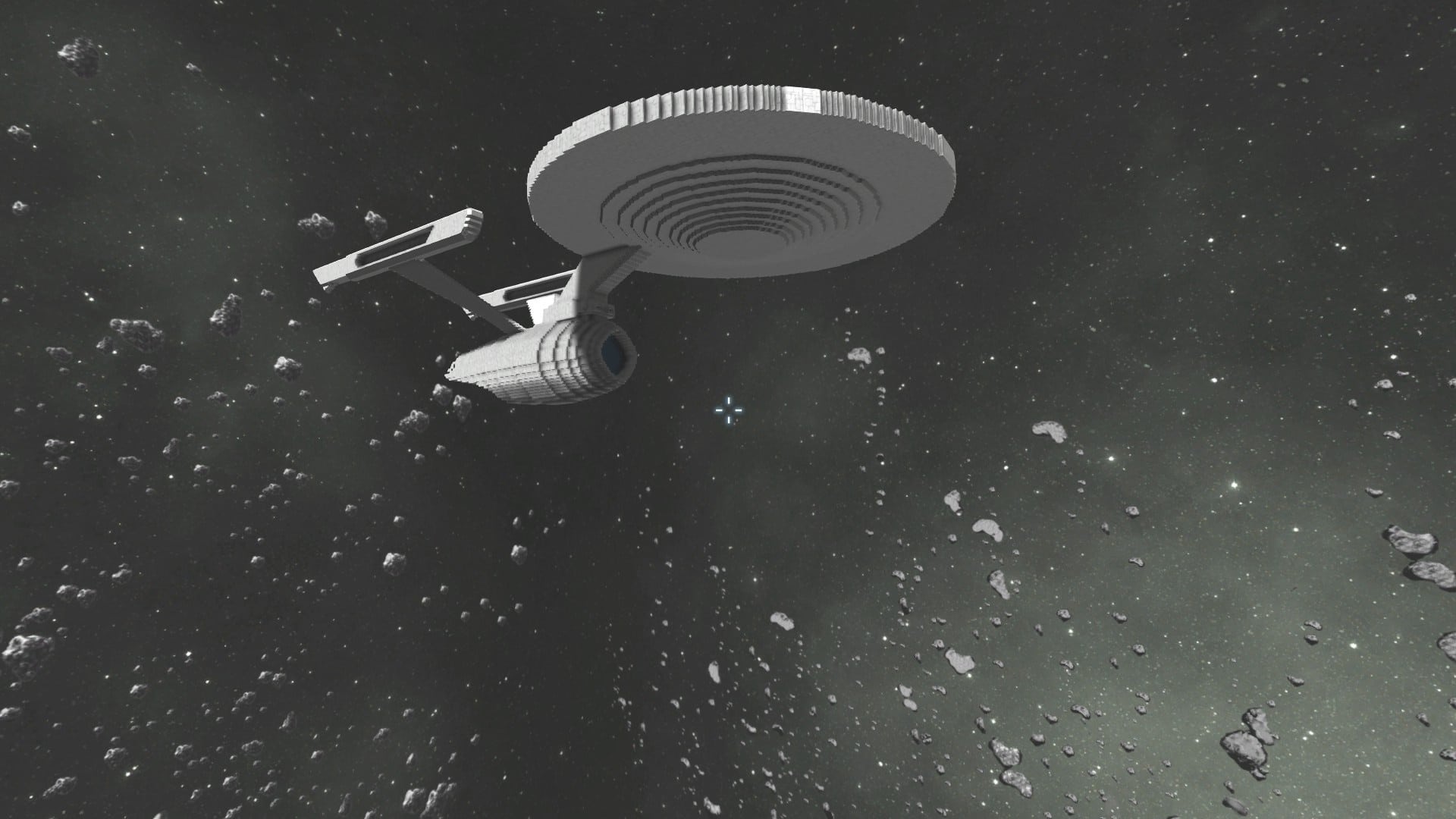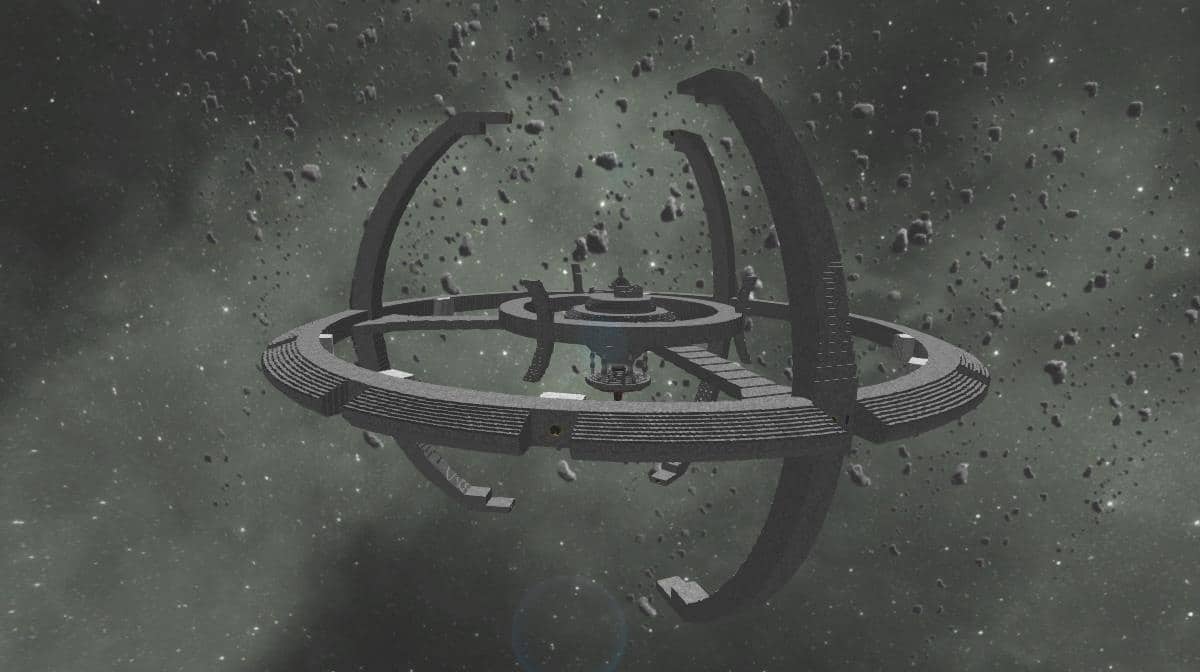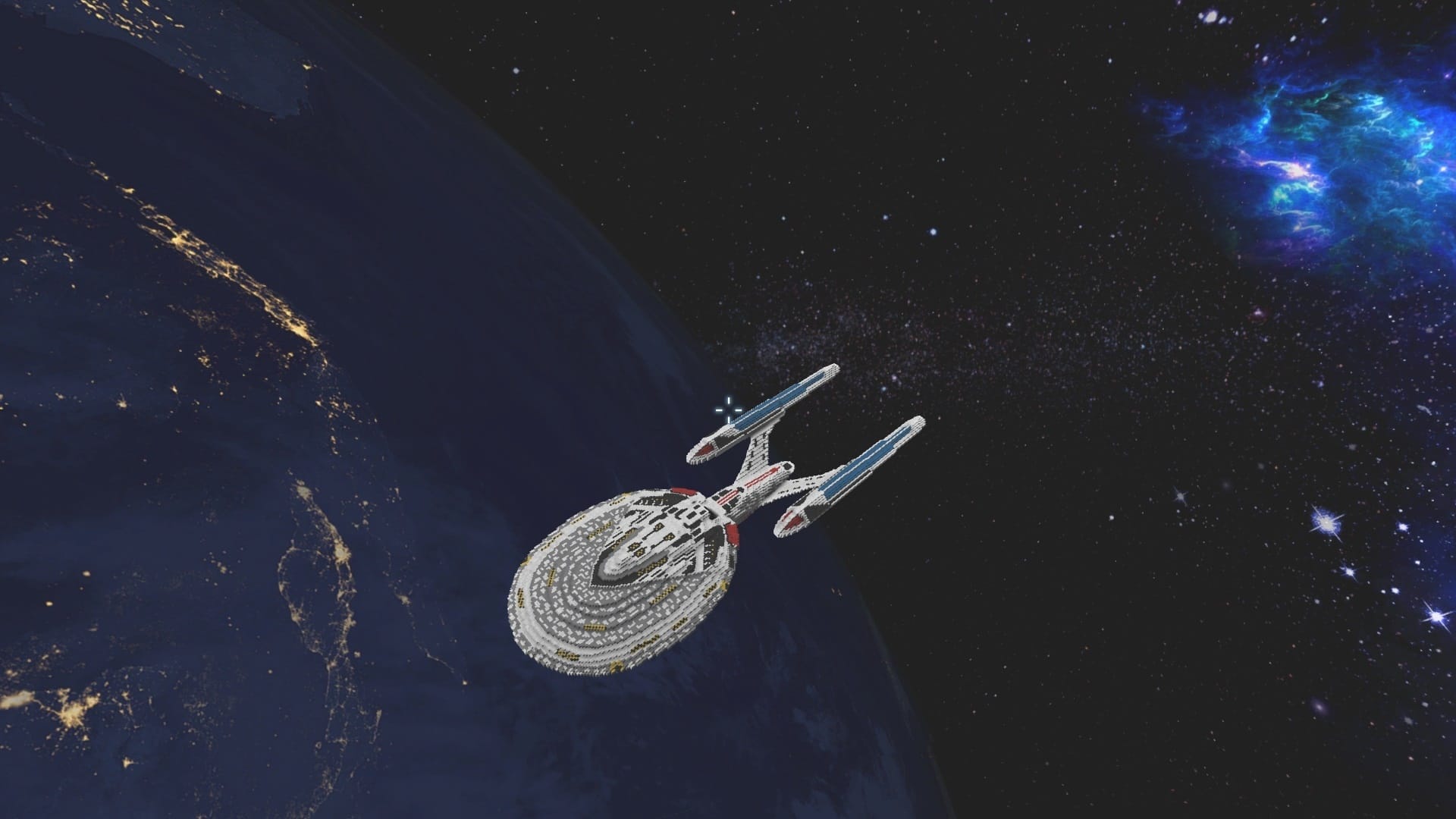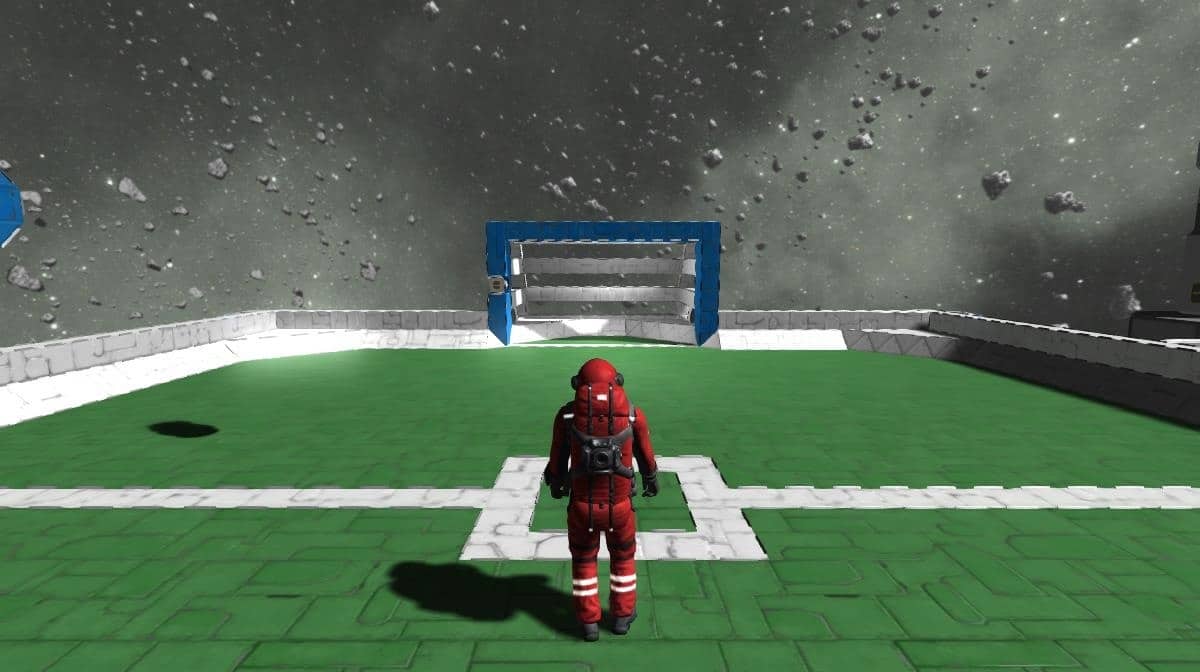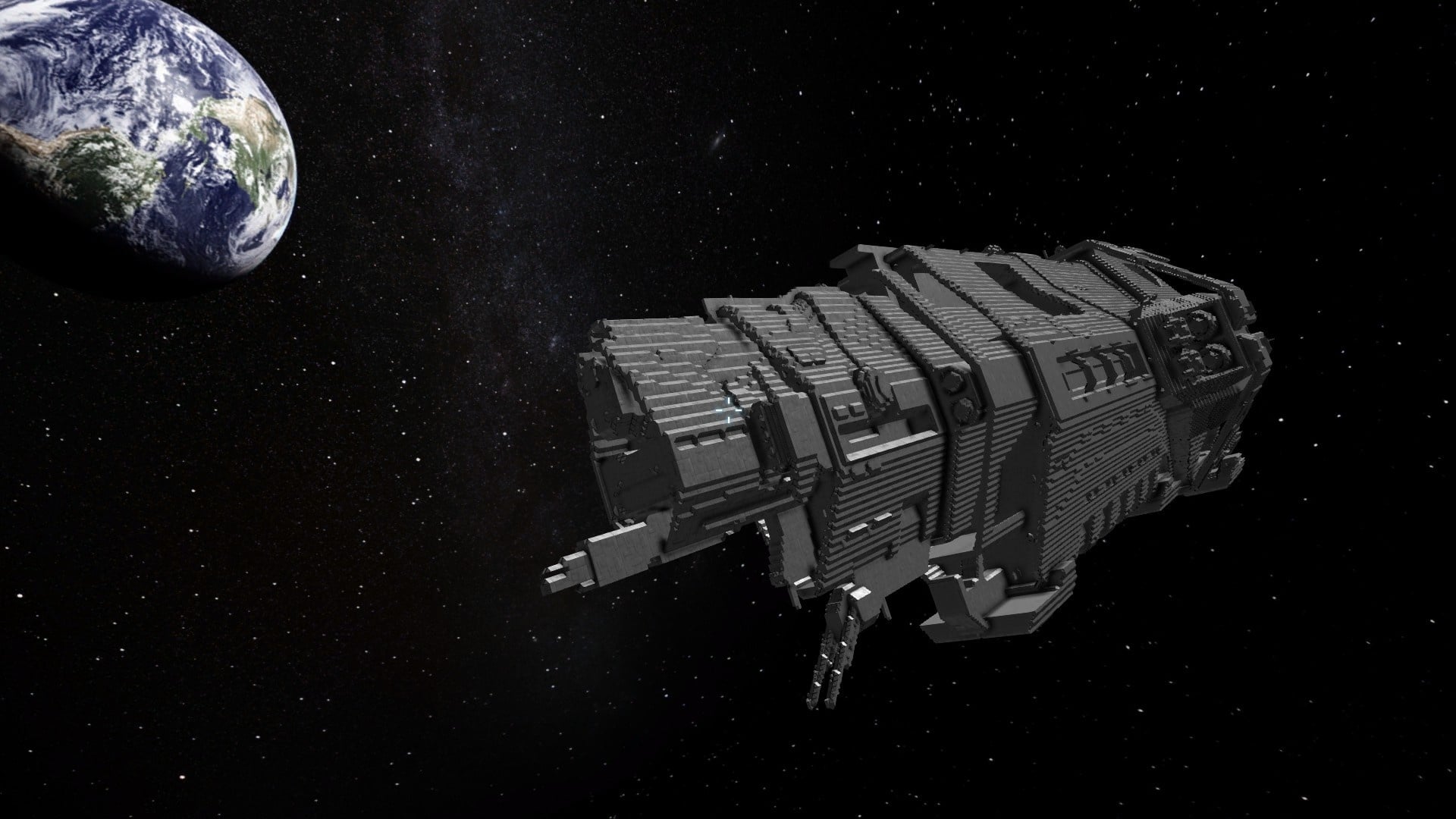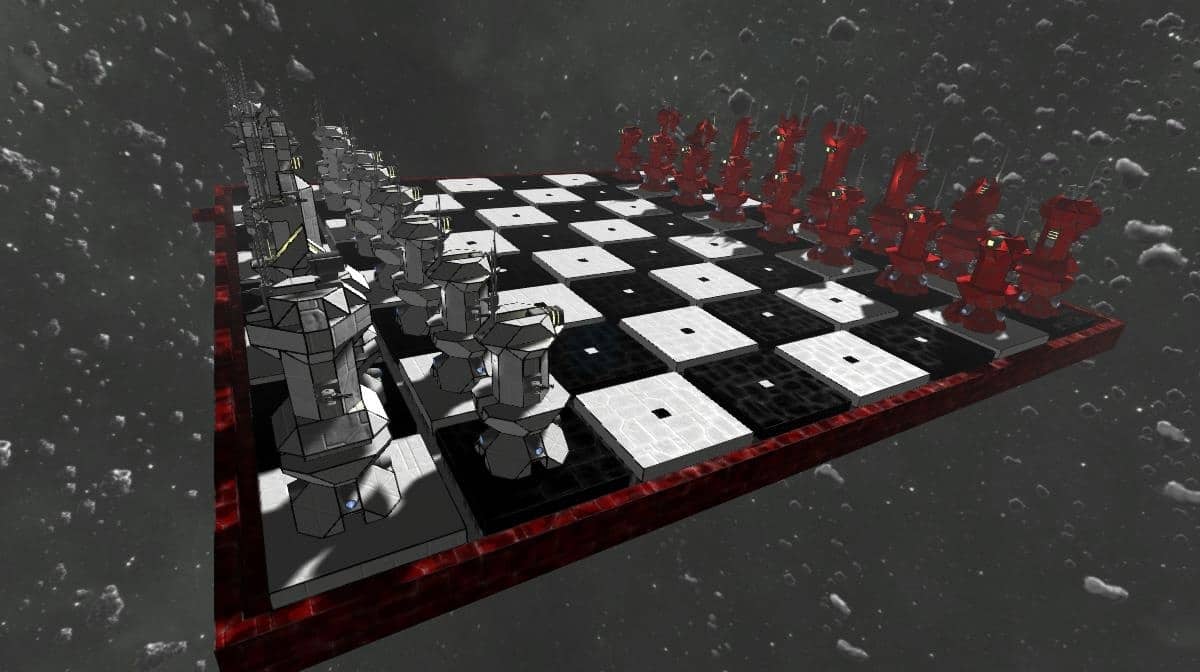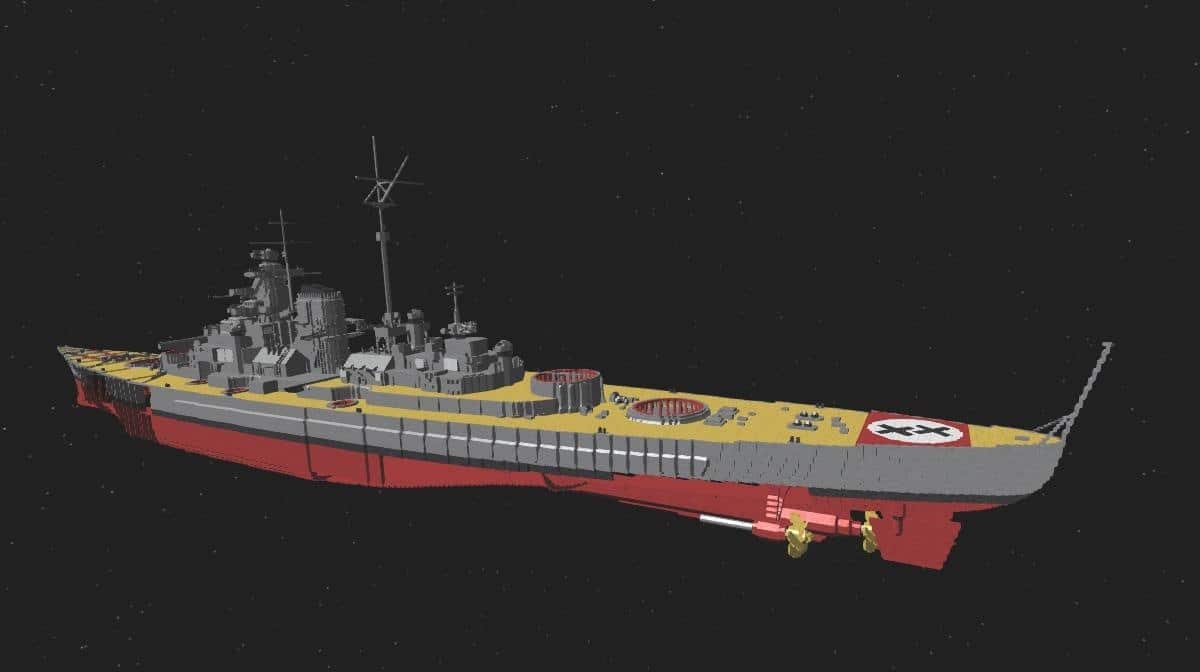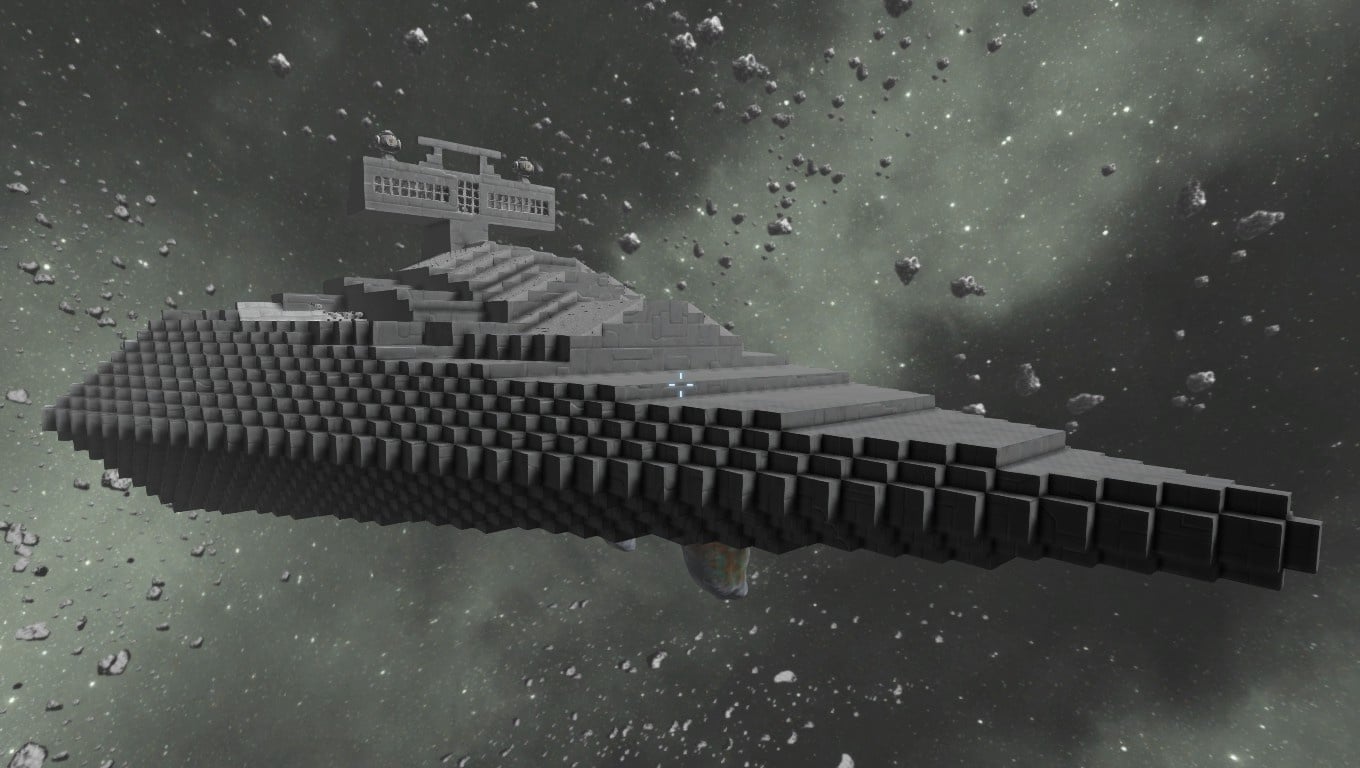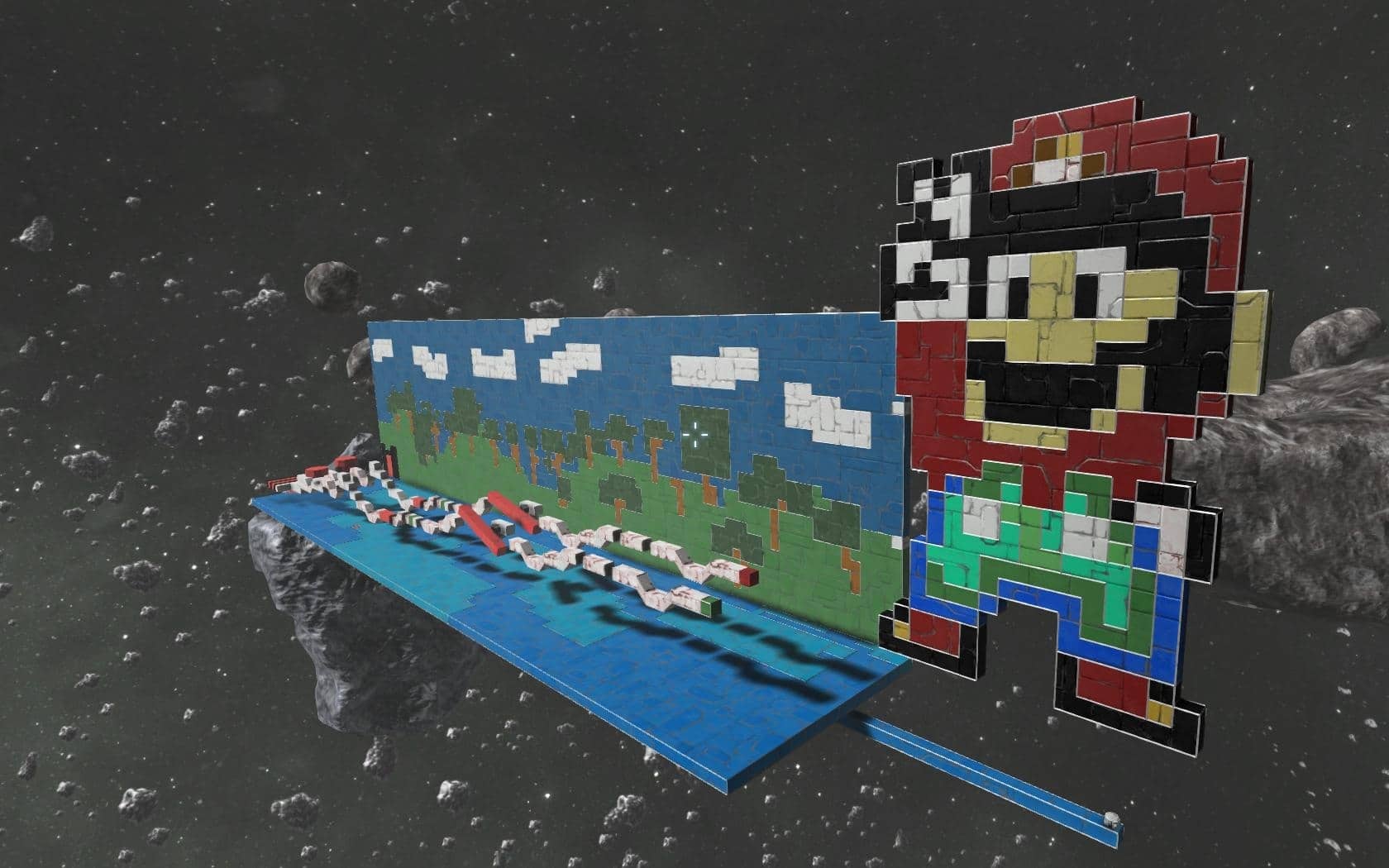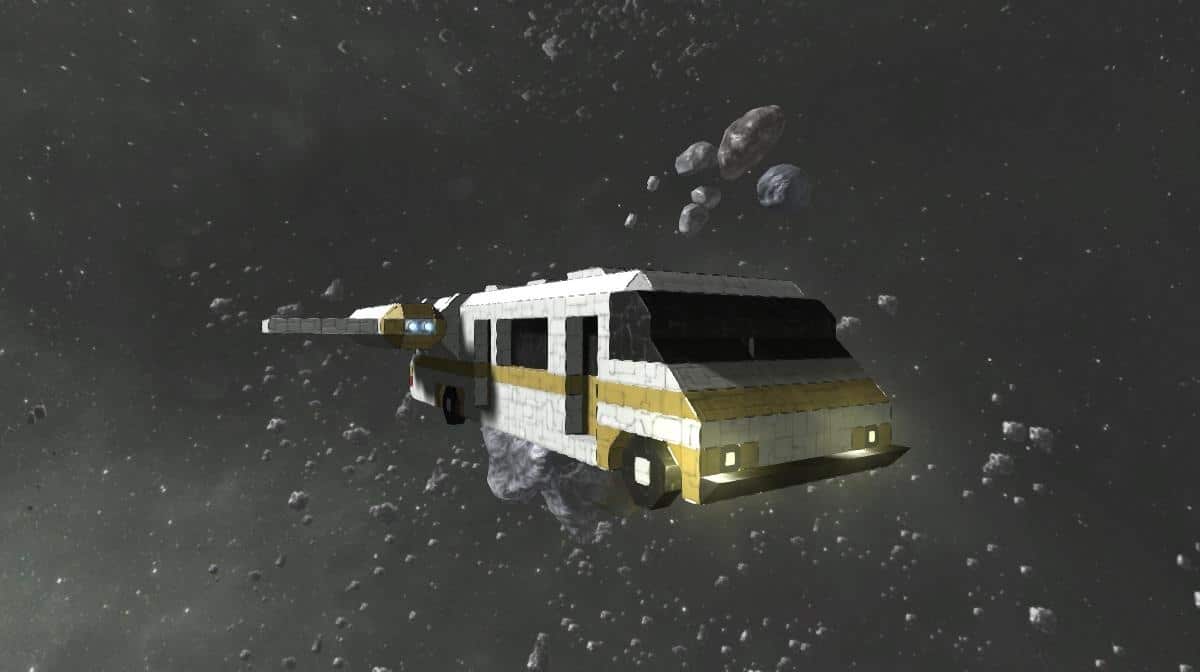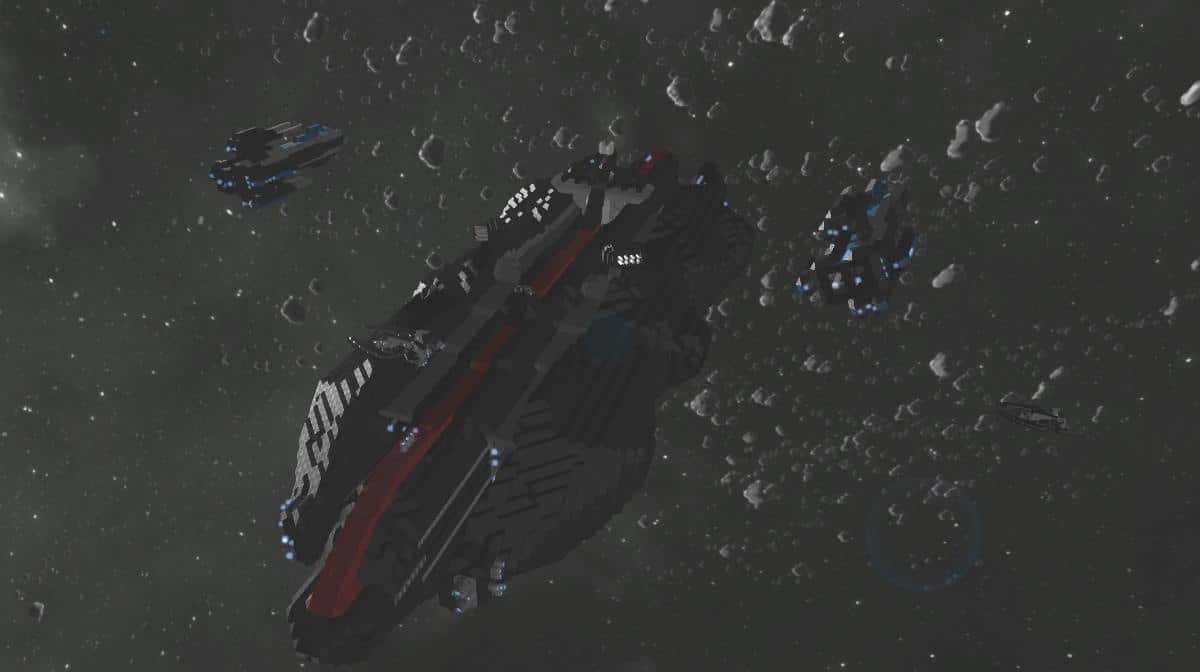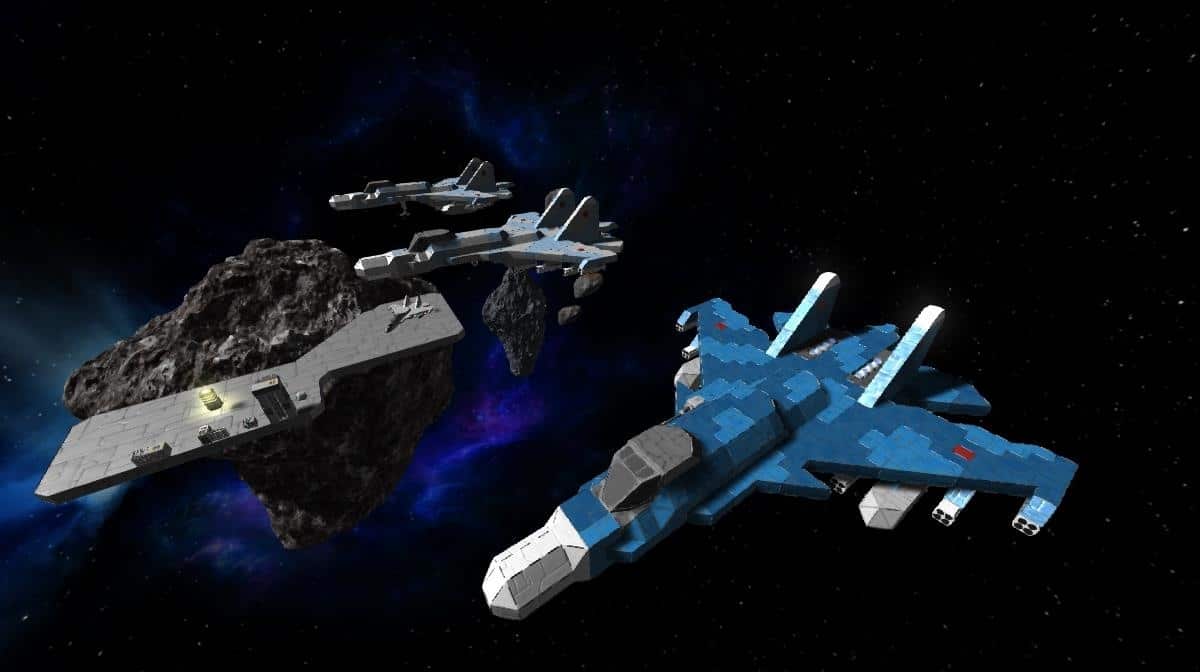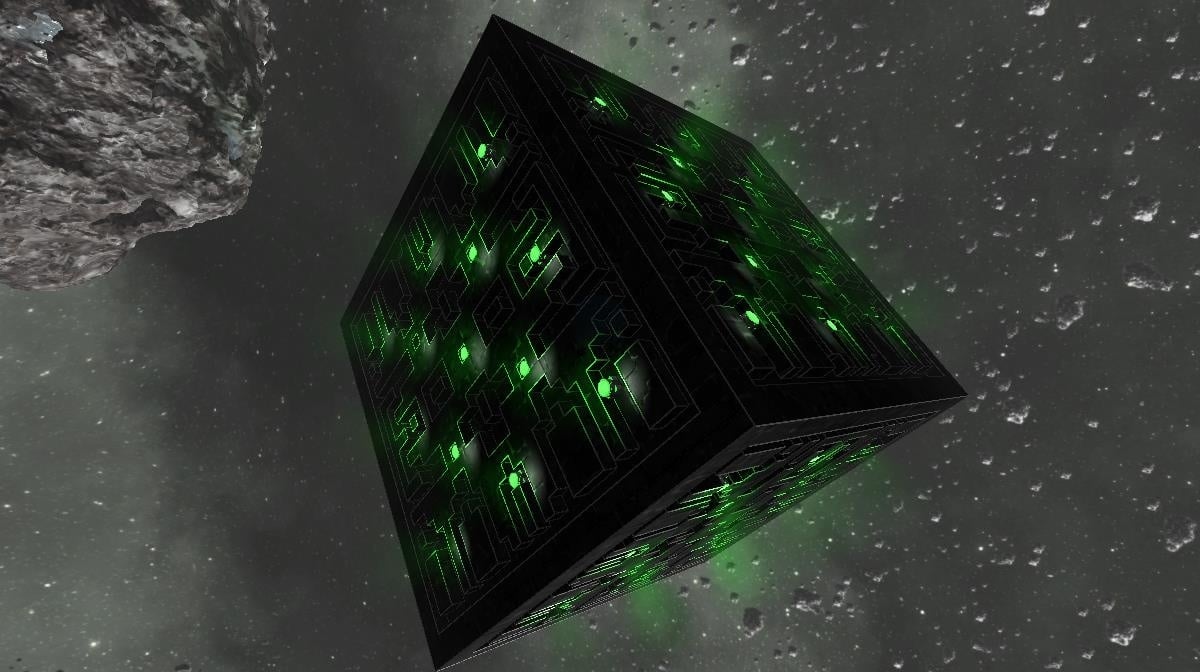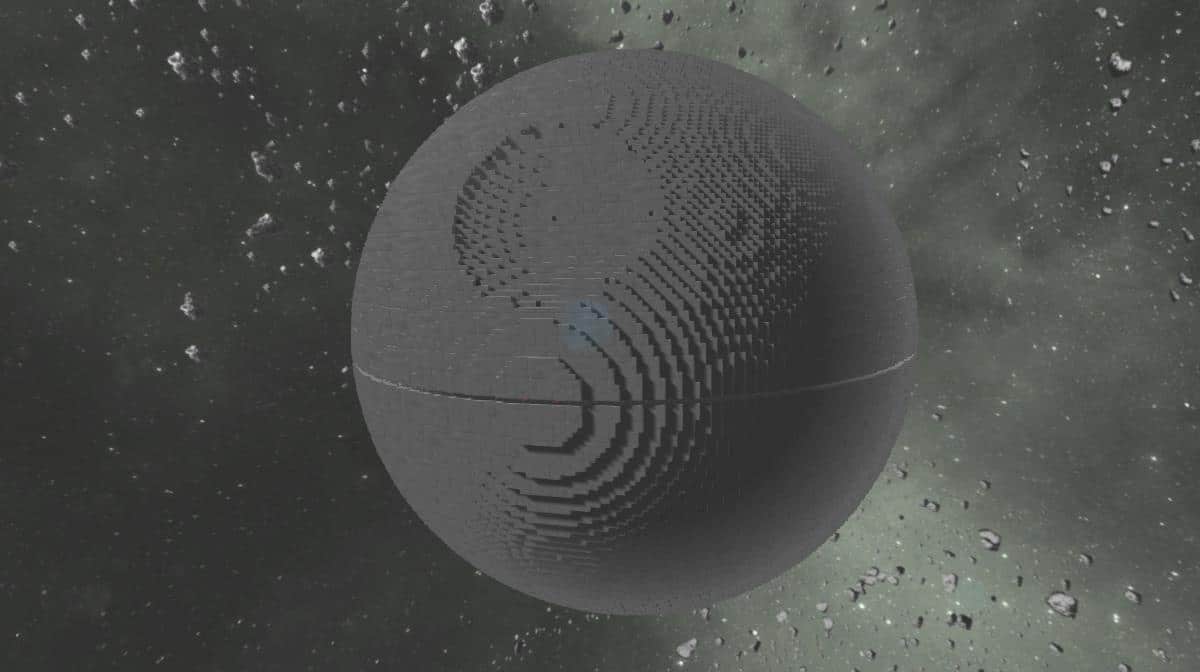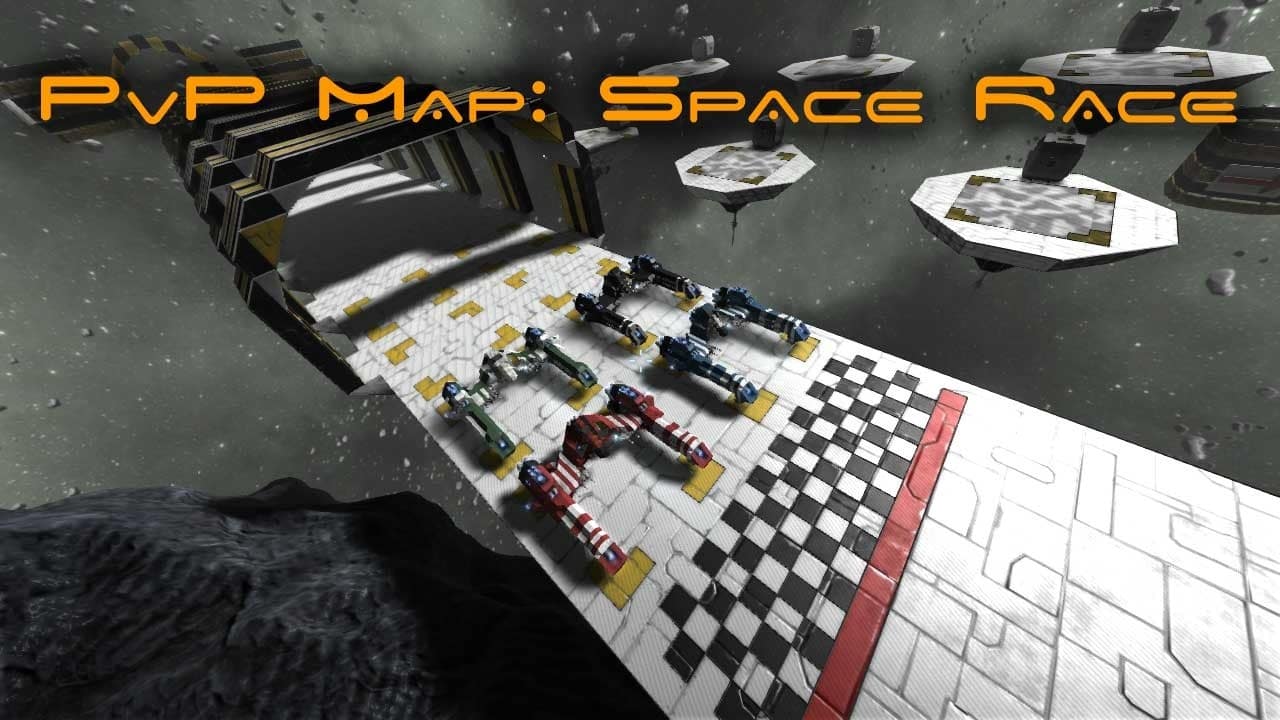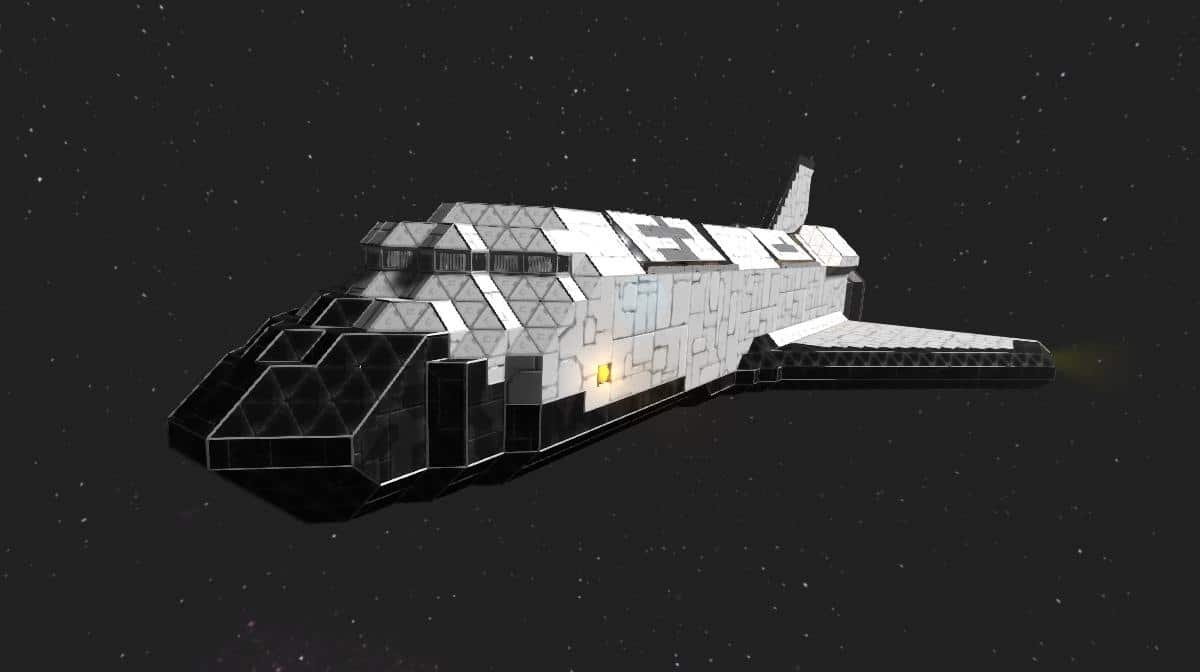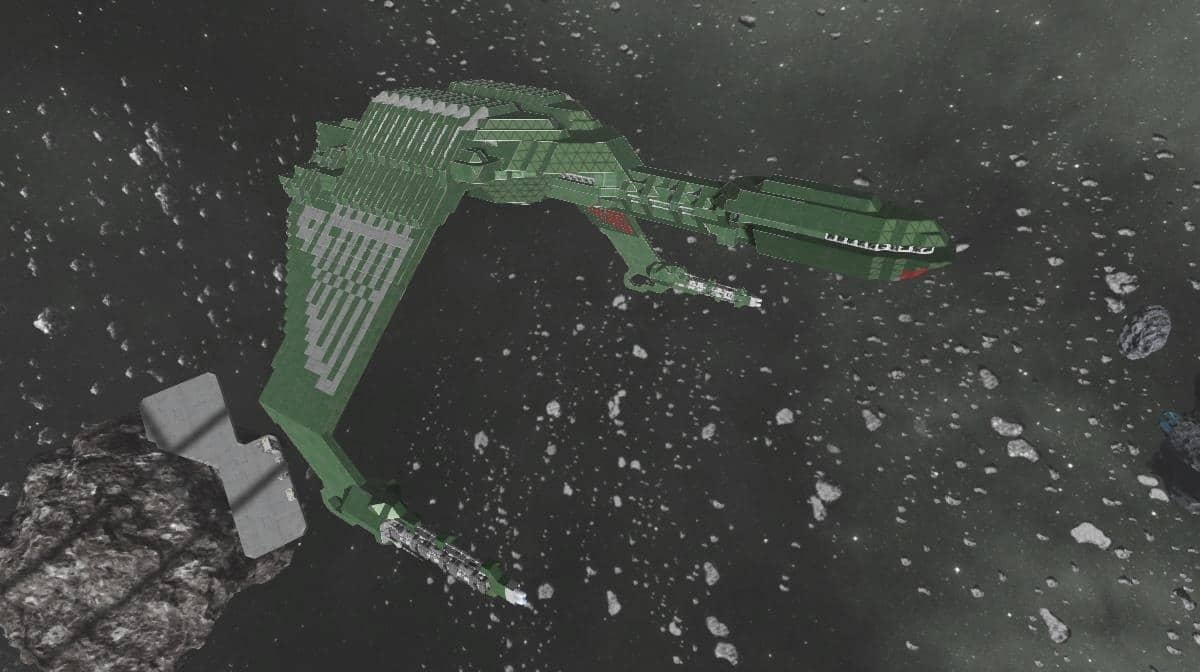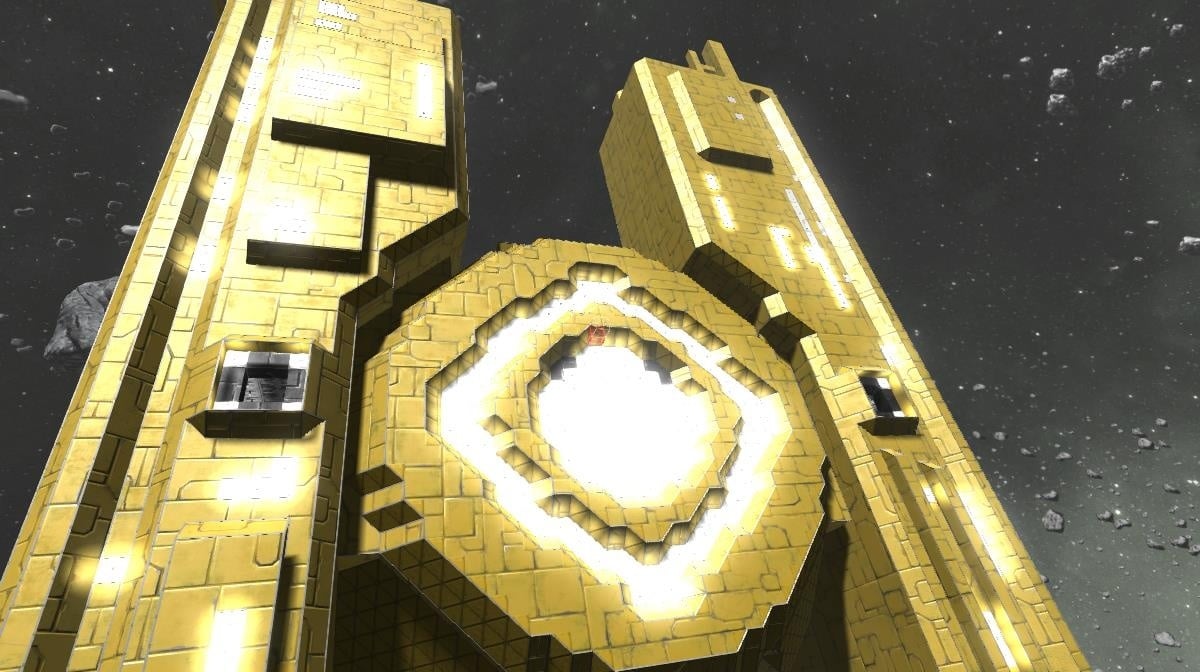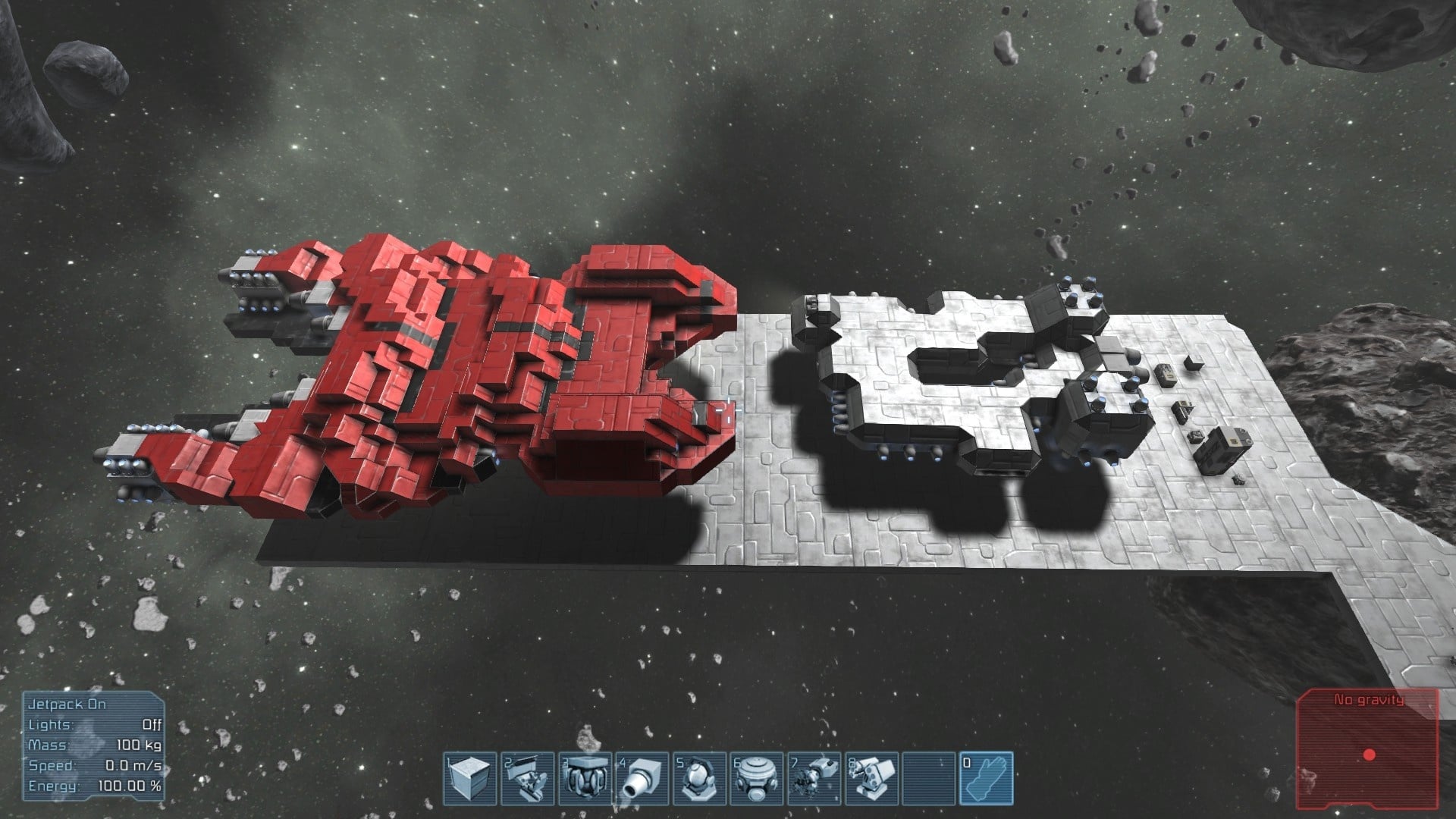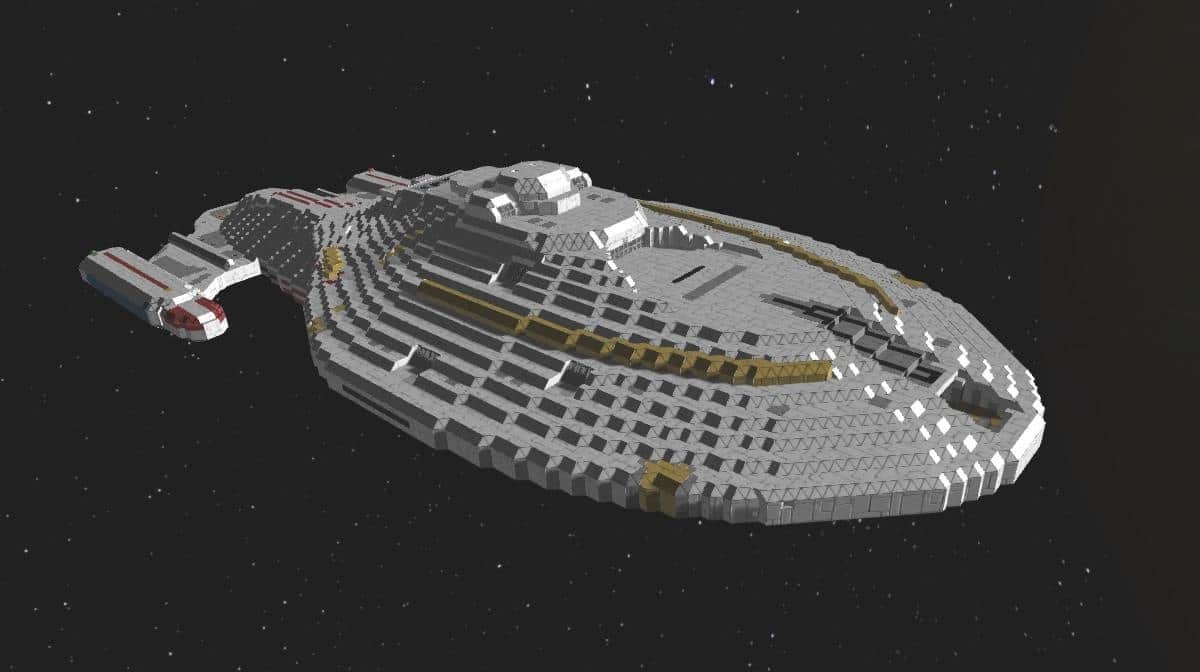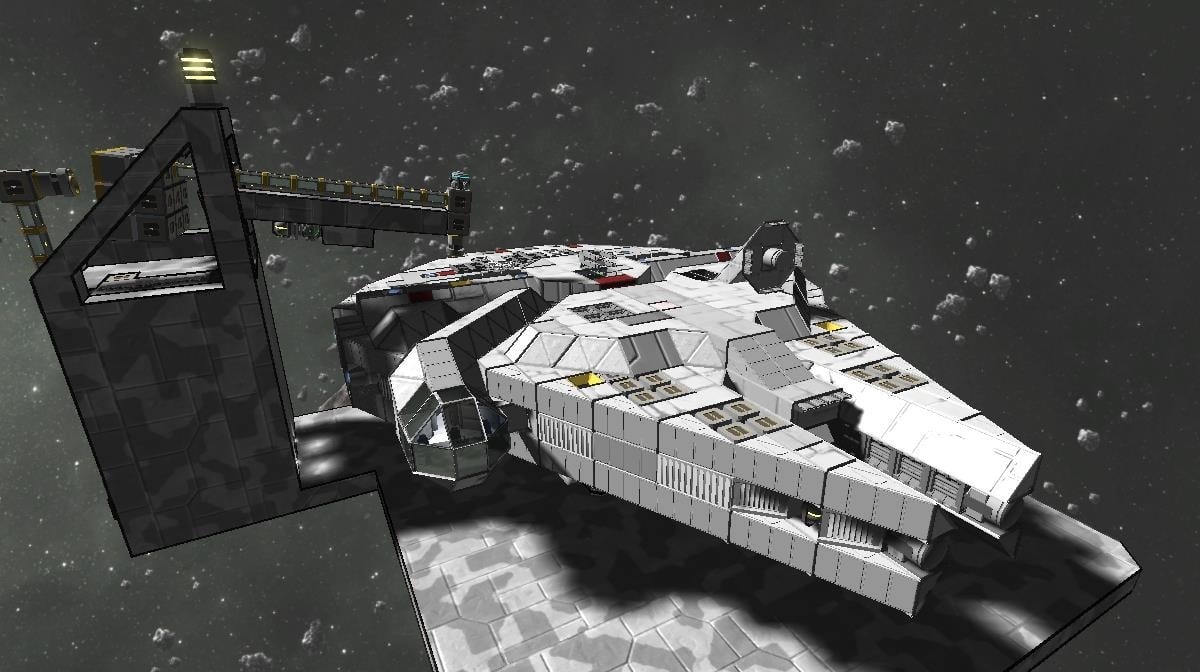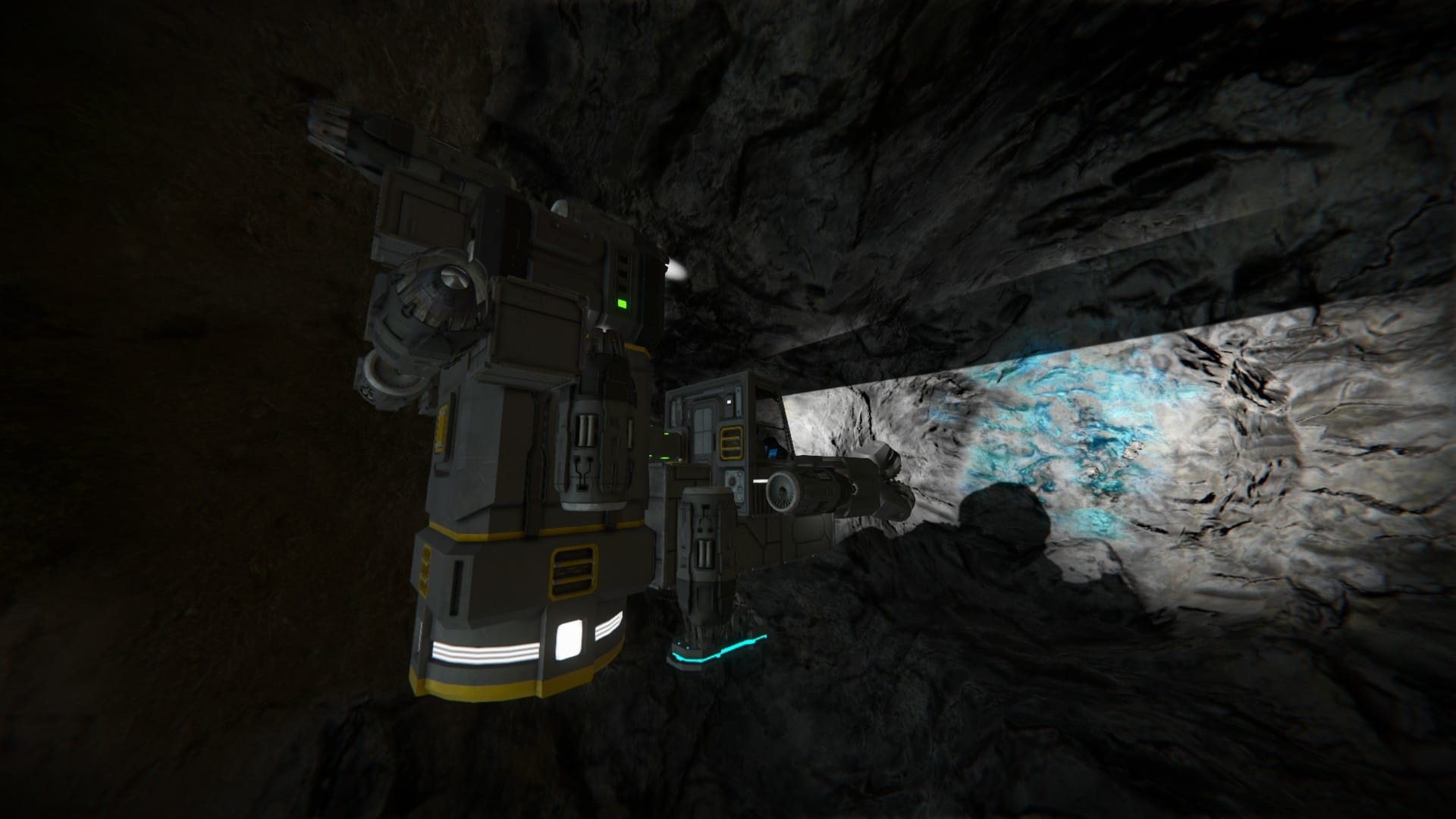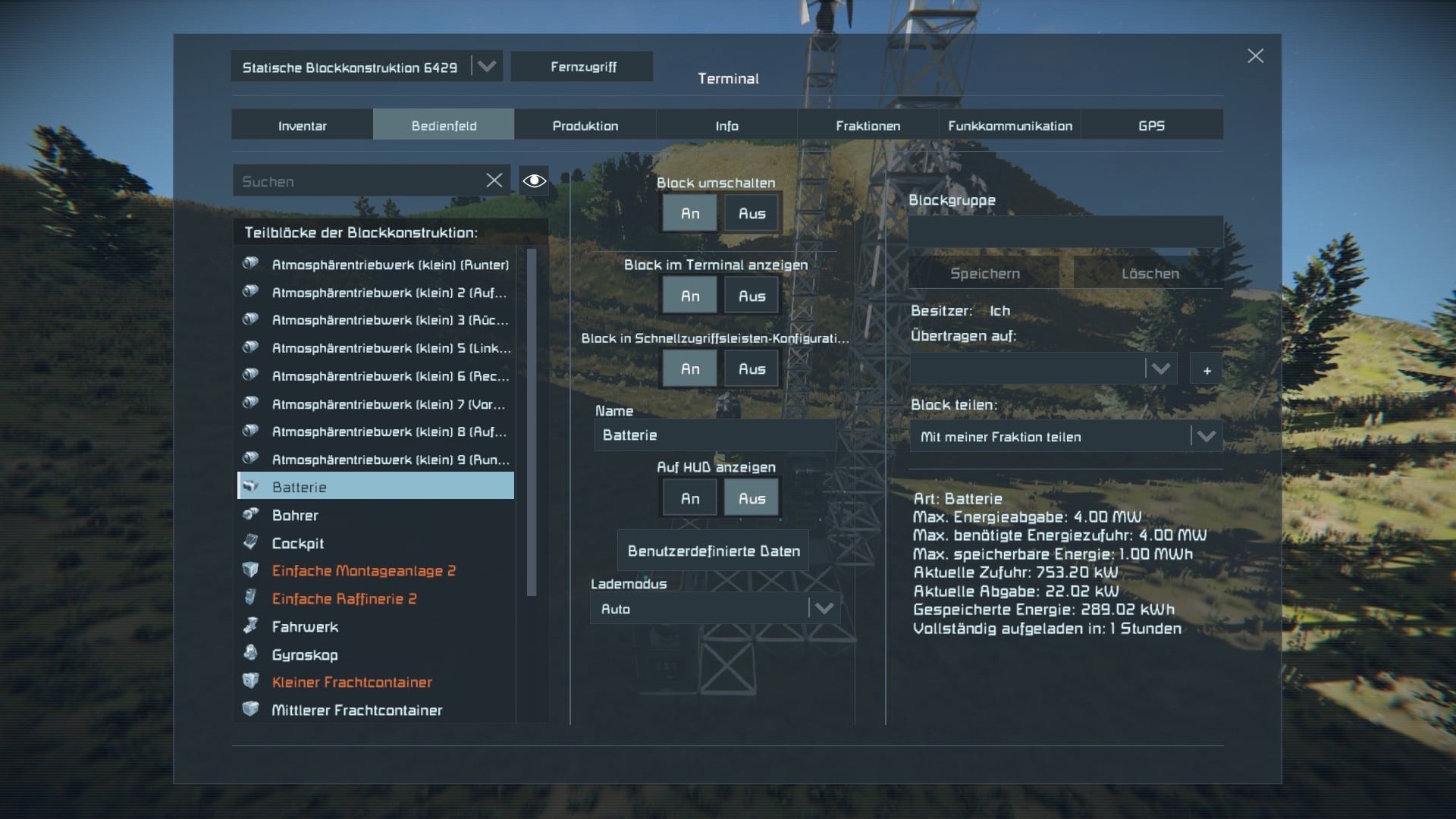Even two years after the release of the full version, Space Engineers is still playing in its own galaxy in the realm of world tree sandbox titles.
Have you ever wished for a Minecraft that offered realistic graphics? That simulates physics more accurately? That gives you even more creative freedom? Then Space Engineers is the right game for you.
The game takes the basic idea of Mojang’s great role model into space and lets you build the spaceships of your dreams to explore outer space with them – and has been doing so since 2013, when Space Engineers entered Early Access on Steam. A lot has happened since then: among other things, planets have been added, a survival mode has been integrated, and even paid DLCs have been offered for a few years.
In the meantime, a loyal fan community has grown up around the game, Space Engineers still gets a respectable 4,000 players per month. Almost (80,000 Steam reviews) paint a “very positive” picture of the space sandbox.
Table of Contents
(Un)limited creativity
Space Engineers is basically a game without a predefined goal. You can choose between a total of seven scenarios in which you experience a predefined story, but these scenarios are rather appetising in terms of scope, especially since the stories are also rather superficial and weakly staged. The dialogues, if there are any at all, are completely unspoken. Even the occasional tracking shots no longer seem contemporary.
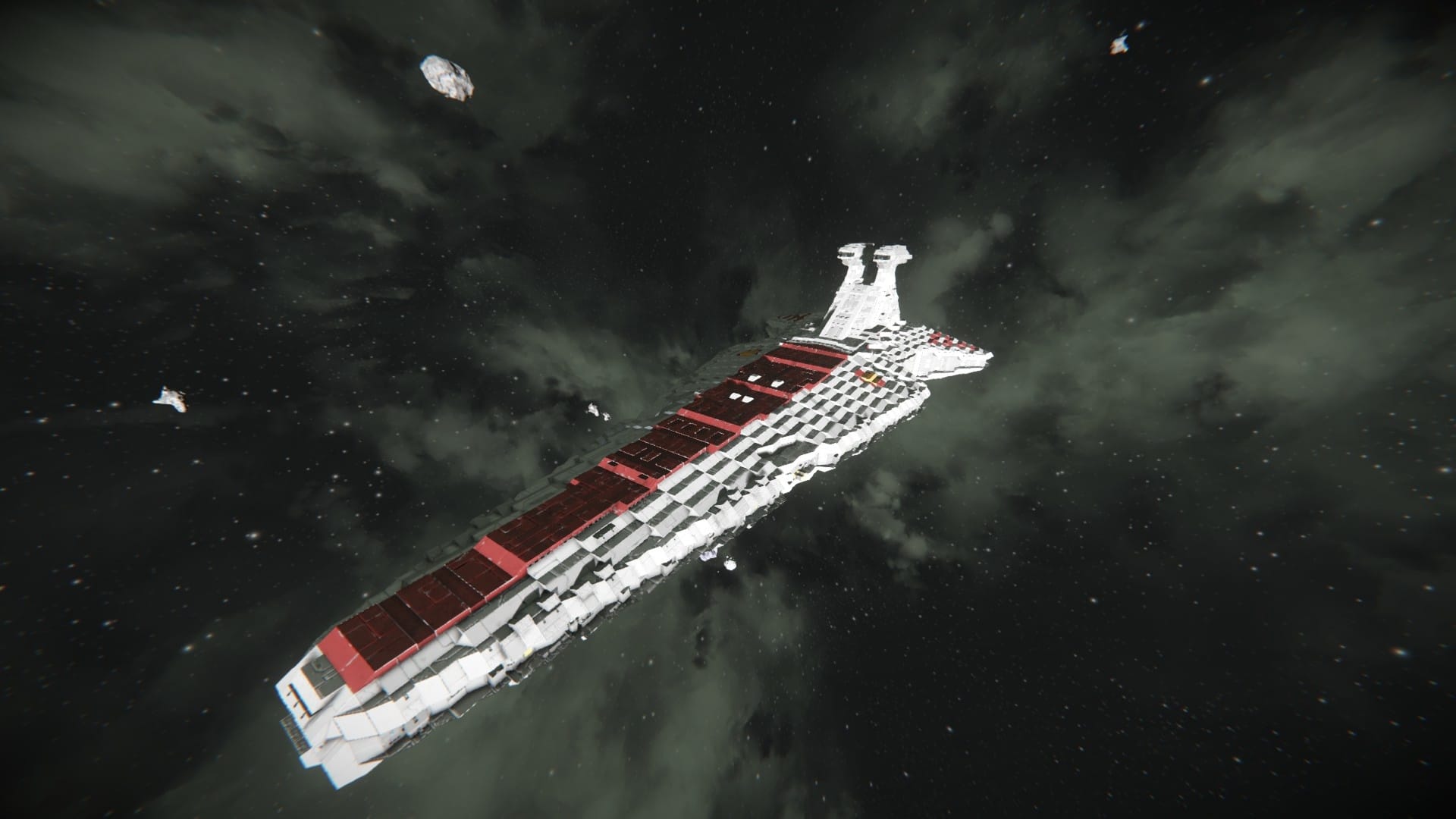
The real heart of Space Engineers is the custom game, which is completely devoid of a backstory. Here you have to set your own goals. There are 13 starting positions to choose from in the custom game, some of which already give you a small base to work from, making it easier to get started. However, the most popular starting locations among fans are those such as the Empty World, where you build everything from scratch.
You can play the custom game in either survival or creative mode. In either case, you take on the role of an astronaut, which you can control from either a first- or third-person perspective.
Minecraft vs. Space Engineers
In creative mode, you place and remove blocks using the mouse buttons and have infinite resources at your disposal. This game principle is already familiar from Minecraft. However, Space Engineers does without the pixelated look of Minecraft and instead focuses on a realistic representation of space.
Differences to the Mojang sandbox are also apparent in terms of complexity: In Space Engineers, for example, you can rotate your blocks freely in any direction regardless of your line of sight. In addition, thanks to your jetpack, you can travel in three dimensions and rotate around your own axis. As a newcomer, you will need a certain amount of time to get used to the controls.
In creative mode, you place blocks with the left mouse button and remove them with the right – just like in Minecraft. You can also colour blocks as you wish.
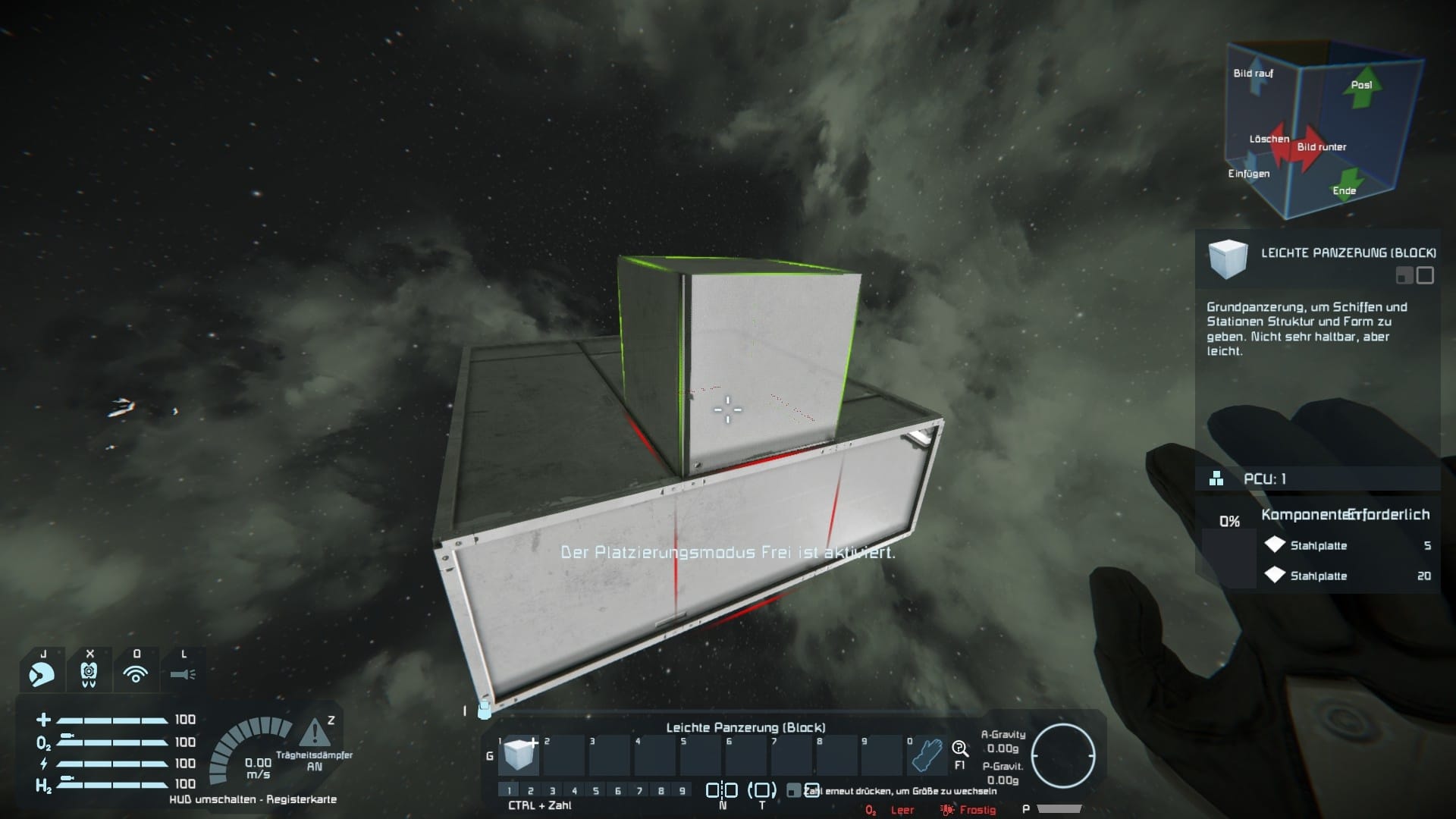
In creative mode, you place blocks with the left mouse button and remove them with the right – just like in Minecraft. You can also colour blocks as you wish.
Once you have overcome this initial hurdle, however, you will learn to love the playful freedom of Space Engineers, which exists to this degree in virtually no other game. Especially the creative mode is fantastic in this respect, because you don’t have to worry about your suit energy or your oxygen, as it is the case in the survival mode. There are very few limitations imposed on you here.
Technology limits your imagination
This, of course, fires your imagination: want to recreate the Millennium Falcon? That’s possible! Or would you rather build a NASA Space Shuttle? Of course! A Borg cube? In principle, that’s also possible, but it’s difficult with the original size. Space Engineers has a problem with its performance.
If you build really big spaceships and then let them crash into asteroids or engage in massive battles, for example, the frame rate drops considerably. The developers did improve the performance during the Early Access phase. However, considering how long Space Engineers has been fully released, significant improvements are no longer to be expected. It is a great pity that such technical limitations restrict the creativity of ambitious engineers.
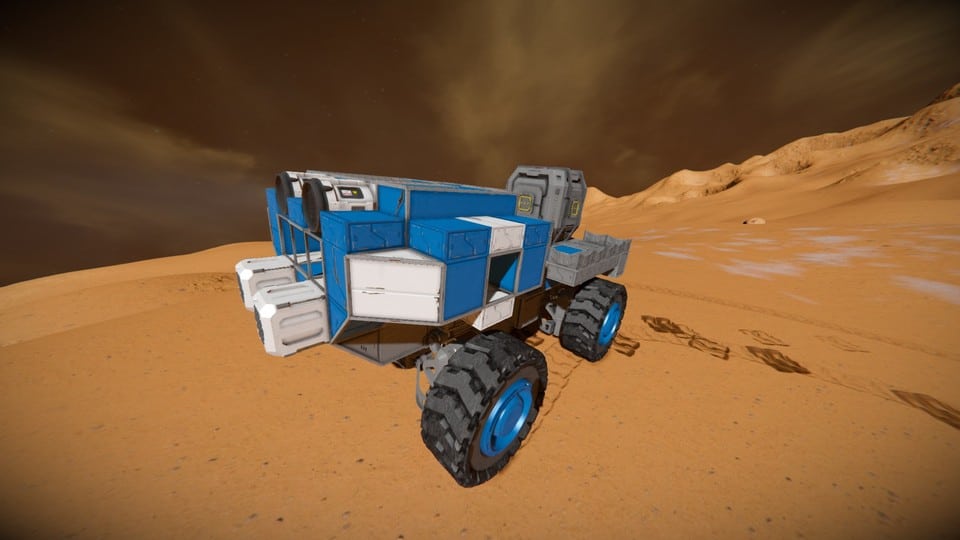
Rover: The alternative to spaceships
In Space Engineers you can build rovers as well as spaceships. These are not as versatile as their flying counterparts, but they are cheaper to build. When building a rover, keep the centre of gravity as low as possible to avoid tipping over in sharp turns.
Complex, motivating game mechanics
You’re not likely to get your full-scale Death Star this way, but it’s still highly exciting to learn the ins and outs of Space Engineers. In order for a ship to be airworthy, it needs a cockpit, a power source, such as a uranium reactor, and a gyroscope. The latter device has nothing to do with food, but enables you to turn your ship in the first place.
The position of the engines should also be considered: You need one engine for each of the six directions you can move in space. If you forget a direction, the spaceship will be difficult to steer in the best case, and in the worst case your flying machine will drift off into the depths of space.
Space Engineers simulates such phenomena; if not completely physically correct, then at least more than most games. For example, you also have to deal with gravity: if your ship weighs too much for some reason, you can no longer escape the gravitational field of a planet and therefore need more thrusters. Especially in survival mode, such contingencies should at best be thought through before a major voyage.
Classic Survival Trip
Apropos: For the ultimate survival experience in Space Engineers we recommend the “Star System”. Here you will be dropped in a capsule on a planet of your choice. For beginners, the Earth is a good choice, while more advanced players go for more challenging celestial bodies such as the alien planet.
Your initial goal is to build a base. Fortunately, the game gives you three very helpful tools: the drill, the welder and the grinder. With the drill, you can drill holes in the Space Engineers voxel landscape at will and collect resources.
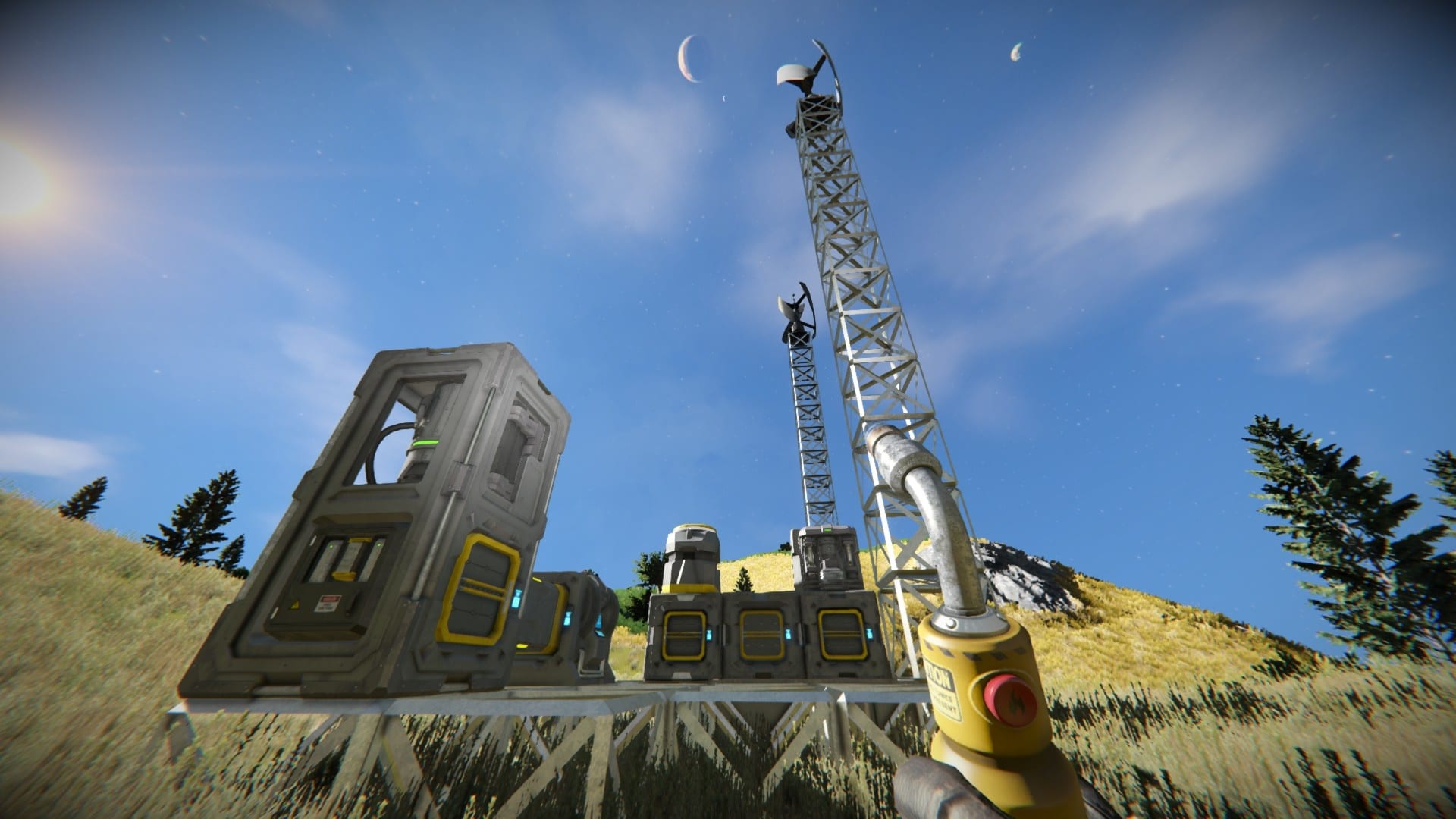
Survival mode is where you first just set the frame of a block and then finish building it with the welder, which costs extra resources. This is interesting in that you don’t always have to finish a block completely.
Often it is enough to exceed a certain threshold for the block to work. Whether you then want to add more armour is up to you. Compared to other survival games, this gives Space Engineers a little more depth, especially with those building blocks that consist of many expensive individual parts.
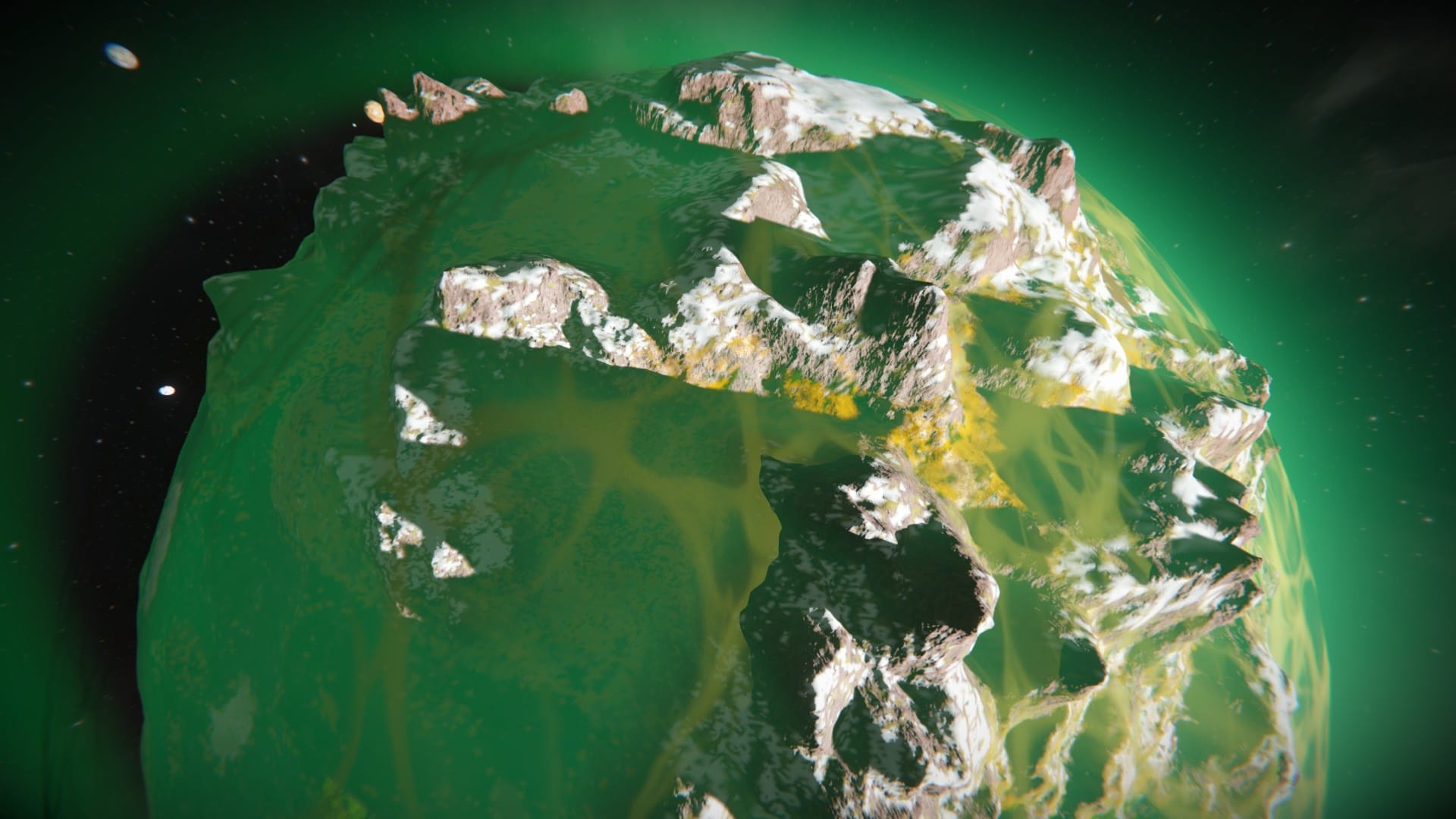
Great moments with lengths in survival mode
If you don’t like the position of a block, you can remove it with the grinder and get all the components back. This helps especially beginners to flatten the steep learning curve. Nevertheless, Space Engineers is a highly complex game that requires a lot of training time.
Although the game offers you in-game hints and tutorial videos, these are far from being able to answer all relevant questions. The menus, which are functional at best, also often seem daunting, which quickly becomes a problem because essential information is buried in them.
At the same time, Space Engineers is not an ugly game at all: When you check the progress of your survival base while the sun sets in the background, it looks quite pretty and creates a wonderfully melancholic atmosphere, to which the really fantastic soundtrack also contributes.
Unfortunately, the experience in survival mode is not always so good. The search for minerals, for example, is frustrating. Those who expect to find ore deposits at every turn, as in Minecraft, will be in for a nasty surprise in Space Engineers.
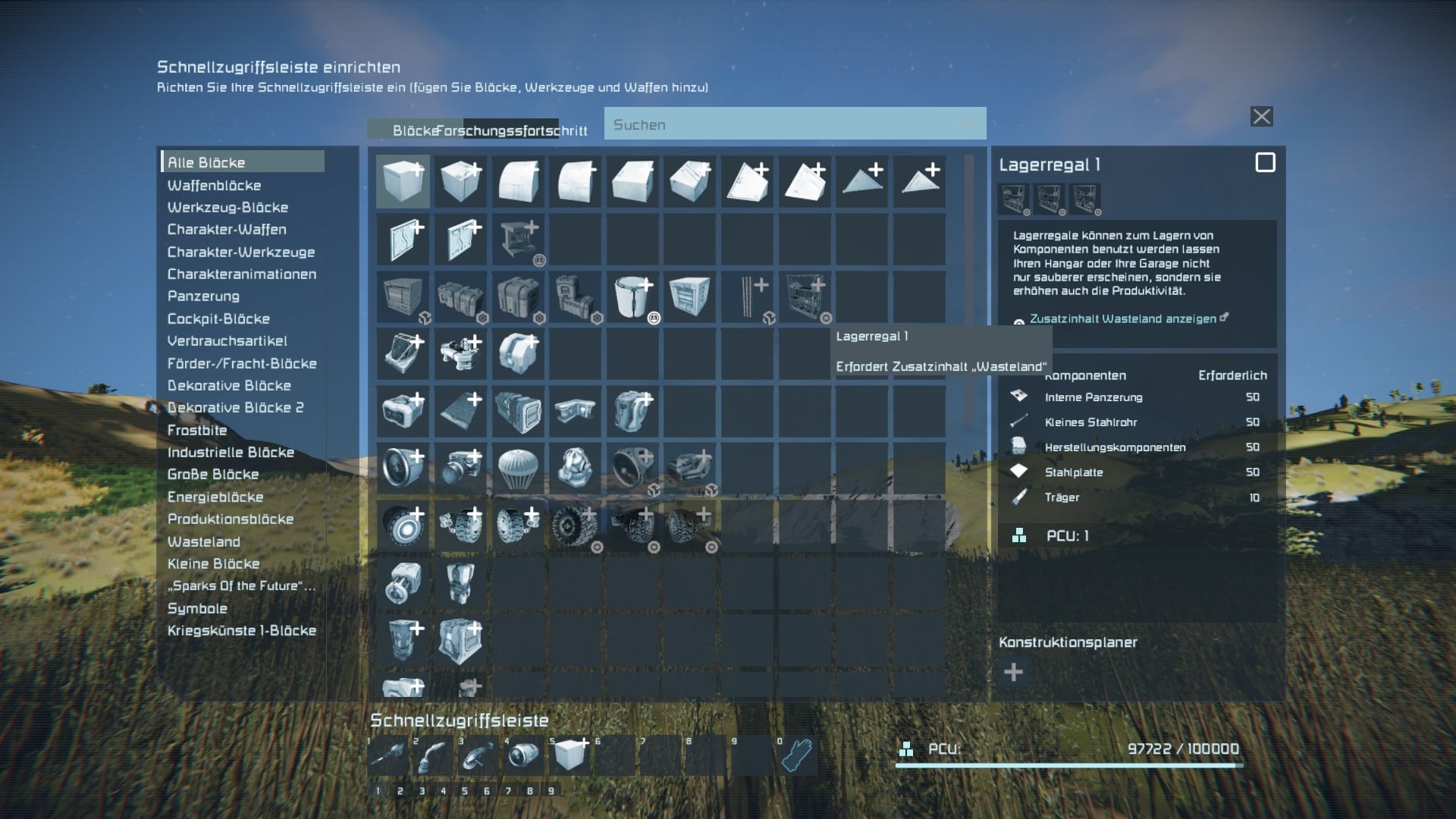
The DLCs at a glance
The paid add-ons for Space Engineers are generally limited to cosmetics: developer Keen Software House adds additional blocks, textures, animations and the like, but no new game systems. The DLCs cost a little over three euros each. Here are the most important ones:
- Heavy Industry: new industry blocks as well as new designs for existing equipment
- Warfare: Adds cover blocks as well as weapon-themed cosmetic items
- Wasteland: Rustic looking blocks for the Rover
- Sparks of the Future: Add futuristic looking blocks like neon lights
- Frostbite: new scenario and additional goals
Sometimes you’ll traipse over an area of several square kilometres, only not to find the coveted ore. Of course, the jetpack helps enormously here, but even its fuel is finite without the right raw material to refill it.
In general, the path to the first spaceship is very rocky – literally. You spend a lot of time at the beginning simply mining stone, processing it in your refinery and repeating the whole process.
Commendably, you can set parameters such as inventory size yourself, which allows you to better customise the game to your liking. In any case, it is incomprehensible that Space Engineers makes us work so long for the first flying machine, because the spaceship gameplay is by far the most fun part of the game.
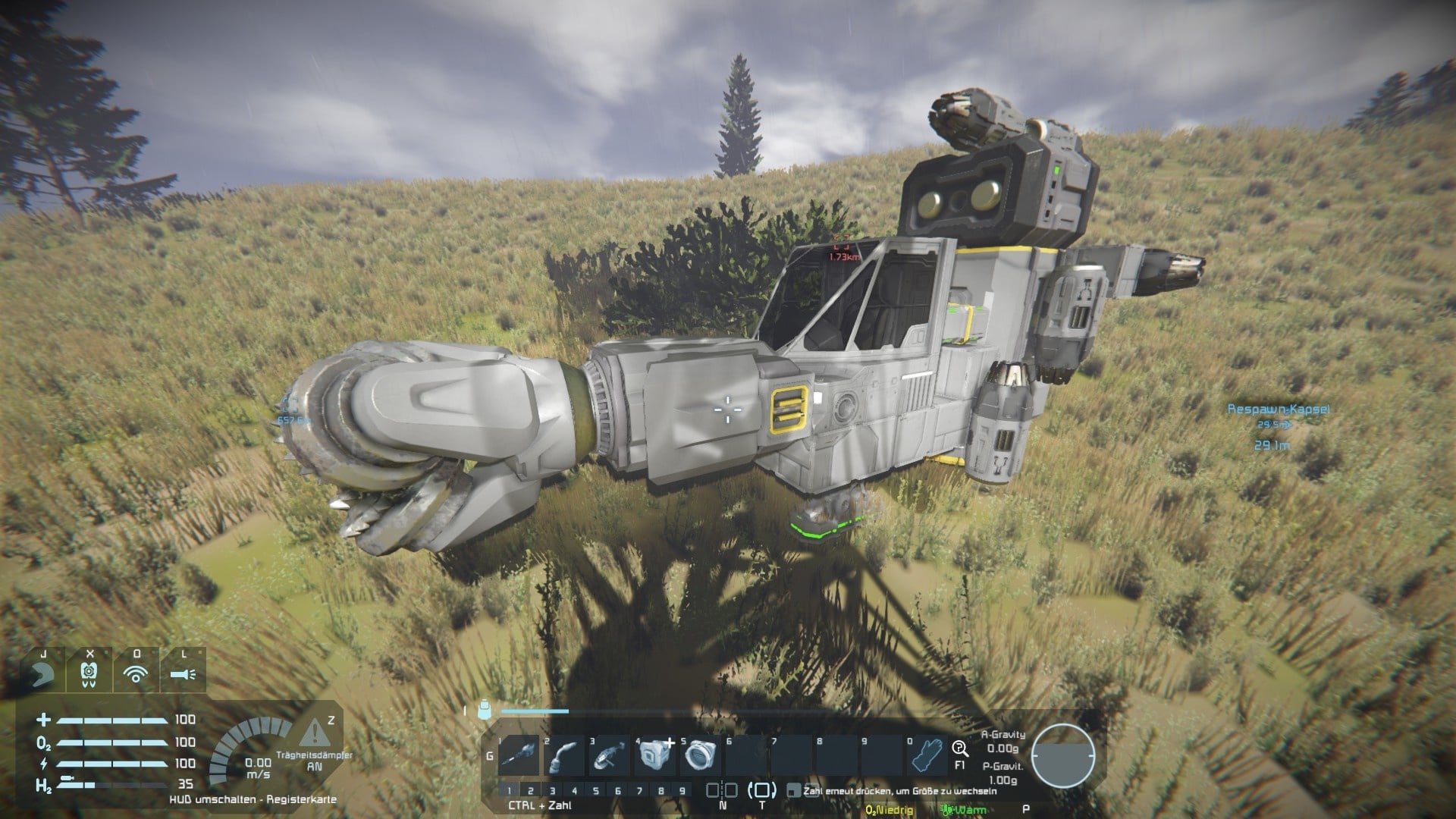
That’s not a moon. That’s an immobile voxel!
Once you have a functional spaceship, the question is what to do with it. Since the survival mode also has no defined goal, you will have to get creative: For example, you could set yourself the task of building a space station or exploring the other planets of the star system.
Nevertheless, an overarching goal would have been quite desirable. How about, for example, a boss enemy that you have to fight on a distant planet, similar to the Ender Dragon from Minecraft?
If you get bored playing solo, it’s a good idea to try out the multiplayer mode. Thanks to the faction system, you can organise yourselves into groups if you wish. Then you have the option of declaring war on other groups, trading or sealing yourself off completely – it’s up to you.
In multiplayer mode it is of course possible to fight huge battles, but here – even more than in single player – performance problems are to be expected when you duel with very large space ships.
In the scenario
But aside from that, the battles are a real highlight: although the ships themselves are only controlled by one player, other engineers can man guns or carry out repairs. But you can also build a kind of carrier ship and let your comrades-in-arms fight in agile space fighters. Very fun!
Overall, the technical framework of Space Engineers is not particularly convincing. All celestial bodies consist of voxels and are completely immobile. Even a tiny asteroid won’t move a millimetre when you ram it, but will damage your ship at the same time. For a game that claims to be realistic, this is very weak.
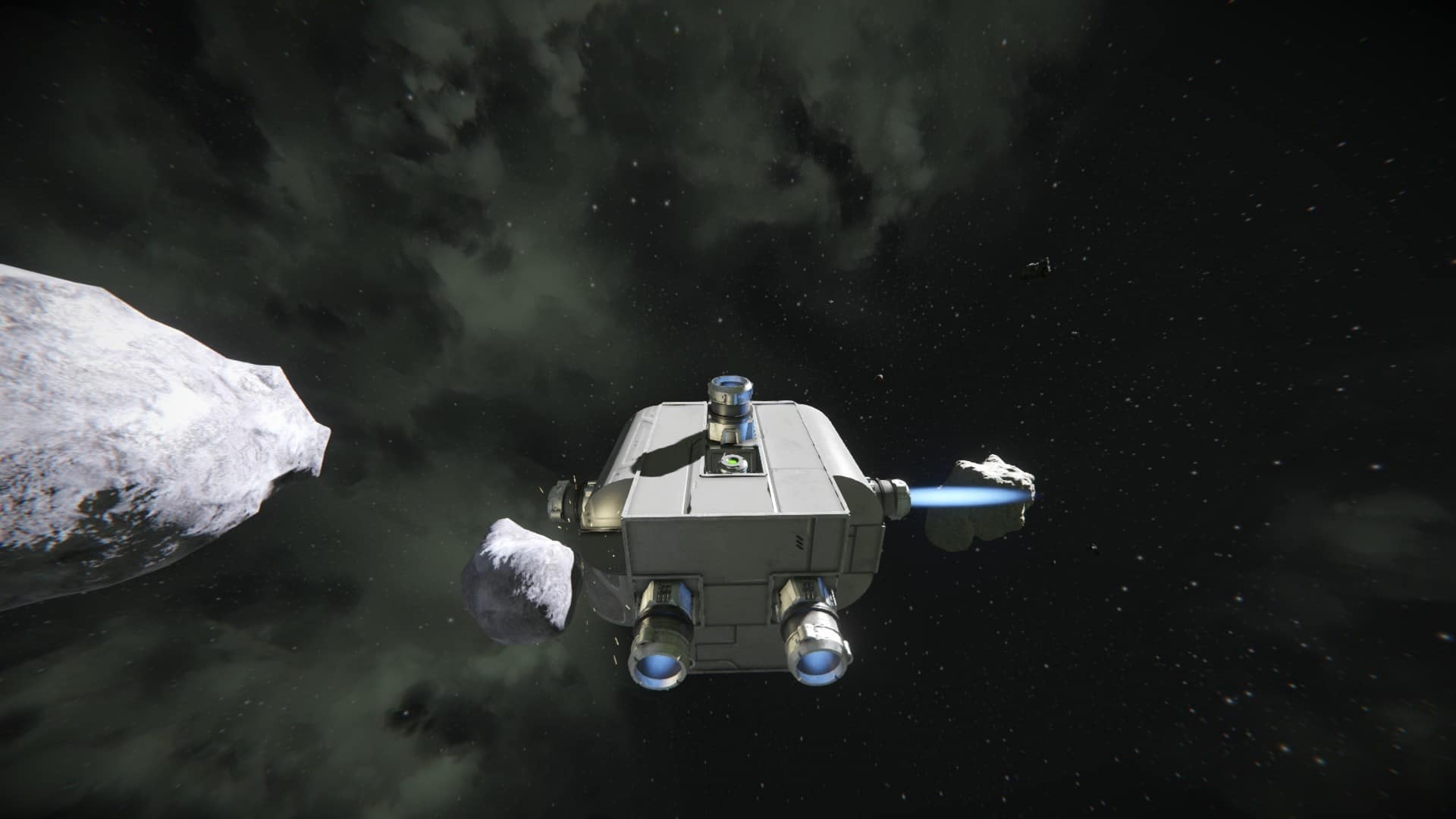
Just so, one might wonder why the completely static planets don’t attract each other, even though gravity emanates from them – or why the sun is part of the skybox and not a real celestial body. But these are only minor problems in the cosmos of an otherwise recommendable game.
Editorial conclusion
For a certain kind of gamer, Space Engineers is like the Holy Grail. If you want to let off steam creatively, there are few sandbox titles that can match the possibilities offered here. The craziest and at the same time greatest fan construction I’ve seen recently was mech battles à la “Pacific Rim” – you can do that in Space Engineers, even if it’s not necessarily intended! However, I myself only belong to this type of player with reservations. Without some kind of framework story or even long-term goals in survival mode, I lack the incentive to play Space Engineers over a longer period of time. In addition, there are the limitations of the engine, which I find annoying. So I think Space Engineers is a very good alternative to Minecraft, but it doesn’t quite come close to the original.

